

Why is it important to do a literature review in research?

The importance of scientific communication in the healthcare industry

The Importance and Role of Biostatistics in Clinical Research
“A substantive, thorough, sophisticated literature review is a precondition for doing substantive, thorough, sophisticated research”. Boote and Baile 2005
Authors of manuscripts treat writing a literature review as a routine work or a mere formality. But a seasoned one knows the purpose and importance of a well-written literature review. Since it is one of the basic needs for researches at any level, they have to be done vigilantly. Only then the reader will know that the basics of research have not been neglected.

The aim of any literature review is to summarize and synthesize the arguments and ideas of existing knowledge in a particular field without adding any new contributions. Being built on existing knowledge they help the researcher to even turn the wheels of the topic of research. It is possible only with profound knowledge of what is wrong in the existing findings in detail to overpower them. For other researches, the literature review gives the direction to be headed for its success.
The common perception of literature review and reality:
As per the common belief, literature reviews are only a summary of the sources related to the research. And many authors of scientific manuscripts believe that they are only surveys of what are the researches are done on the chosen topic. But on the contrary, it uses published information from pertinent and relevant sources like
- Scholarly books
- Scientific papers
- Latest studies in the field
- Established school of thoughts
- Relevant articles from renowned scientific journals
and many more for a field of study or theory or a particular problem to do the following:
- Summarize into a brief account of all information
- Synthesize the information by restructuring and reorganizing
- Critical evaluation of a concept or a school of thought or ideas
- Familiarize the authors to the extent of knowledge in the particular field
- Encapsulate
- Compare & contrast
By doing the above on the relevant information, it provides the reader of the scientific manuscript with the following for a better understanding of it:
- It establishes the authors’ in-depth understanding and knowledge of their field subject
- It gives the background of the research
- Portrays the scientific manuscript plan of examining the research result
- Illuminates on how the knowledge has changed within the field
- Highlights what has already been done in a particular field
- Information of the generally accepted facts, emerging and current state of the topic of research
- Identifies the research gap that is still unexplored or under-researched fields
- Demonstrates how the research fits within a larger field of study
- Provides an overview of the sources explored during the research of a particular topic
Importance of literature review in research:
The importance of literature review in scientific manuscripts can be condensed into an analytical feature to enable the multifold reach of its significance. It adds value to the legitimacy of the research in many ways:
- Provides the interpretation of existing literature in light of updated developments in the field to help in establishing the consistency in knowledge and relevancy of existing materials
- It helps in calculating the impact of the latest information in the field by mapping their progress of knowledge.
- It brings out the dialects of contradictions between various thoughts within the field to establish facts
- The research gaps scrutinized initially are further explored to establish the latest facts of theories to add value to the field
- Indicates the current research place in the schema of a particular field
- Provides information for relevancy and coherency to check the research
- Apart from elucidating the continuance of knowledge, it also points out areas that require further investigation and thus aid as a starting point of any future research
- Justifies the research and sets up the research question
- Sets up a theoretical framework comprising the concepts and theories of the research upon which its success can be judged
- Helps to adopt a more appropriate methodology for the research by examining the strengths and weaknesses of existing research in the same field
- Increases the significance of the results by comparing it with the existing literature
- Provides a point of reference by writing the findings in the scientific manuscript
- Helps to get the due credit from the audience for having done the fact-finding and fact-checking mission in the scientific manuscripts
- The more the reference of relevant sources of it could increase more of its trustworthiness with the readers
- Helps to prevent plagiarism by tailoring and uniquely tweaking the scientific manuscript not to repeat other’s original idea
- By preventing plagiarism , it saves the scientific manuscript from rejection and thus also saves a lot of time and money
- Helps to evaluate, condense and synthesize gist in the author’s own words to sharpen the research focus
- Helps to compare and contrast to show the originality and uniqueness of the research than that of the existing other researches
- Rationalizes the need for conducting the particular research in a specified field
- Helps to collect data accurately for allowing any new methodology of research than the existing ones
- Enables the readers of the manuscript to answer the following questions of its readers for its better chances for publication
- What do the researchers know?
- What do they not know?
- Is the scientific manuscript reliable and trustworthy?
- What are the knowledge gaps of the researcher?
22. It helps the readers to identify the following for further reading of the scientific manuscript:
- What has been already established, discredited and accepted in the particular field of research
- Areas of controversy and conflicts among different schools of thought
- Unsolved problems and issues in the connected field of research
- The emerging trends and approaches
- How the research extends, builds upon and leaves behind from the previous research
A profound literature review with many relevant sources of reference will enhance the chances of the scientific manuscript publication in renowned and reputed scientific journals .
References:
http://www.math.montana.edu/jobo/phdprep/phd6.pdf
journal Publishing services | Scientific Editing Services | Medical Writing Services | scientific research writing service | Scientific communication services
Related Topics:
Meta Analysis
Scientific Research Paper Writing
Medical Research Paper Writing
Scientific Communication in healthcare
pubrica academy
Related posts.

Importance Of Proofreading For Scientific Writing Methods and Significance

Statistical analyses of case-control studies

Selecting material (e.g. excipient, active pharmaceutical ingredient, packaging material) for drug development
Comments are closed.
Have a language expert improve your writing
Run a free plagiarism check in 10 minutes, generate accurate citations for free.
- Knowledge Base
Methodology
- How to Write a Literature Review | Guide, Examples, & Templates
How to Write a Literature Review | Guide, Examples, & Templates
Published on January 2, 2023 by Shona McCombes . Revised on September 11, 2023.
What is a literature review? A literature review is a survey of scholarly sources on a specific topic. It provides an overview of current knowledge, allowing you to identify relevant theories, methods, and gaps in the existing research that you can later apply to your paper, thesis, or dissertation topic .
There are five key steps to writing a literature review:
- Search for relevant literature
- Evaluate sources
- Identify themes, debates, and gaps
- Outline the structure
- Write your literature review
A good literature review doesn’t just summarize sources—it analyzes, synthesizes , and critically evaluates to give a clear picture of the state of knowledge on the subject.
Instantly correct all language mistakes in your text
Upload your document to correct all your mistakes in minutes

Table of contents
What is the purpose of a literature review, examples of literature reviews, step 1 – search for relevant literature, step 2 – evaluate and select sources, step 3 – identify themes, debates, and gaps, step 4 – outline your literature review’s structure, step 5 – write your literature review, free lecture slides, other interesting articles, frequently asked questions, introduction.
- Quick Run-through
- Step 1 & 2
When you write a thesis , dissertation , or research paper , you will likely have to conduct a literature review to situate your research within existing knowledge. The literature review gives you a chance to:
- Demonstrate your familiarity with the topic and its scholarly context
- Develop a theoretical framework and methodology for your research
- Position your work in relation to other researchers and theorists
- Show how your research addresses a gap or contributes to a debate
- Evaluate the current state of research and demonstrate your knowledge of the scholarly debates around your topic.
Writing literature reviews is a particularly important skill if you want to apply for graduate school or pursue a career in research. We’ve written a step-by-step guide that you can follow below.

Receive feedback on language, structure, and formatting
Professional editors proofread and edit your paper by focusing on:
- Academic style
- Vague sentences
- Style consistency
See an example

Writing literature reviews can be quite challenging! A good starting point could be to look at some examples, depending on what kind of literature review you’d like to write.
- Example literature review #1: “Why Do People Migrate? A Review of the Theoretical Literature” ( Theoretical literature review about the development of economic migration theory from the 1950s to today.)
- Example literature review #2: “Literature review as a research methodology: An overview and guidelines” ( Methodological literature review about interdisciplinary knowledge acquisition and production.)
- Example literature review #3: “The Use of Technology in English Language Learning: A Literature Review” ( Thematic literature review about the effects of technology on language acquisition.)
- Example literature review #4: “Learners’ Listening Comprehension Difficulties in English Language Learning: A Literature Review” ( Chronological literature review about how the concept of listening skills has changed over time.)
You can also check out our templates with literature review examples and sample outlines at the links below.
Download Word doc Download Google doc
Before you begin searching for literature, you need a clearly defined topic .
If you are writing the literature review section of a dissertation or research paper, you will search for literature related to your research problem and questions .
Make a list of keywords
Start by creating a list of keywords related to your research question. Include each of the key concepts or variables you’re interested in, and list any synonyms and related terms. You can add to this list as you discover new keywords in the process of your literature search.
- Social media, Facebook, Instagram, Twitter, Snapchat, TikTok
- Body image, self-perception, self-esteem, mental health
- Generation Z, teenagers, adolescents, youth
Search for relevant sources
Use your keywords to begin searching for sources. Some useful databases to search for journals and articles include:
- Your university’s library catalogue
- Google Scholar
- Project Muse (humanities and social sciences)
- Medline (life sciences and biomedicine)
- EconLit (economics)
- Inspec (physics, engineering and computer science)
You can also use boolean operators to help narrow down your search.
Make sure to read the abstract to find out whether an article is relevant to your question. When you find a useful book or article, you can check the bibliography to find other relevant sources.
You likely won’t be able to read absolutely everything that has been written on your topic, so it will be necessary to evaluate which sources are most relevant to your research question.
For each publication, ask yourself:
- What question or problem is the author addressing?
- What are the key concepts and how are they defined?
- What are the key theories, models, and methods?
- Does the research use established frameworks or take an innovative approach?
- What are the results and conclusions of the study?
- How does the publication relate to other literature in the field? Does it confirm, add to, or challenge established knowledge?
- What are the strengths and weaknesses of the research?
Make sure the sources you use are credible , and make sure you read any landmark studies and major theories in your field of research.
You can use our template to summarize and evaluate sources you’re thinking about using. Click on either button below to download.
Take notes and cite your sources
As you read, you should also begin the writing process. Take notes that you can later incorporate into the text of your literature review.
It is important to keep track of your sources with citations to avoid plagiarism . It can be helpful to make an annotated bibliography , where you compile full citation information and write a paragraph of summary and analysis for each source. This helps you remember what you read and saves time later in the process.
Prevent plagiarism. Run a free check.
To begin organizing your literature review’s argument and structure, be sure you understand the connections and relationships between the sources you’ve read. Based on your reading and notes, you can look for:
- Trends and patterns (in theory, method or results): do certain approaches become more or less popular over time?
- Themes: what questions or concepts recur across the literature?
- Debates, conflicts and contradictions: where do sources disagree?
- Pivotal publications: are there any influential theories or studies that changed the direction of the field?
- Gaps: what is missing from the literature? Are there weaknesses that need to be addressed?
This step will help you work out the structure of your literature review and (if applicable) show how your own research will contribute to existing knowledge.
- Most research has focused on young women.
- There is an increasing interest in the visual aspects of social media.
- But there is still a lack of robust research on highly visual platforms like Instagram and Snapchat—this is a gap that you could address in your own research.
There are various approaches to organizing the body of a literature review. Depending on the length of your literature review, you can combine several of these strategies (for example, your overall structure might be thematic, but each theme is discussed chronologically).
Chronological
The simplest approach is to trace the development of the topic over time. However, if you choose this strategy, be careful to avoid simply listing and summarizing sources in order.
Try to analyze patterns, turning points and key debates that have shaped the direction of the field. Give your interpretation of how and why certain developments occurred.
If you have found some recurring central themes, you can organize your literature review into subsections that address different aspects of the topic.
For example, if you are reviewing literature about inequalities in migrant health outcomes, key themes might include healthcare policy, language barriers, cultural attitudes, legal status, and economic access.
Methodological
If you draw your sources from different disciplines or fields that use a variety of research methods , you might want to compare the results and conclusions that emerge from different approaches. For example:
- Look at what results have emerged in qualitative versus quantitative research
- Discuss how the topic has been approached by empirical versus theoretical scholarship
- Divide the literature into sociological, historical, and cultural sources
Theoretical
A literature review is often the foundation for a theoretical framework . You can use it to discuss various theories, models, and definitions of key concepts.
You might argue for the relevance of a specific theoretical approach, or combine various theoretical concepts to create a framework for your research.
Like any other academic text , your literature review should have an introduction , a main body, and a conclusion . What you include in each depends on the objective of your literature review.
The introduction should clearly establish the focus and purpose of the literature review.
Depending on the length of your literature review, you might want to divide the body into subsections. You can use a subheading for each theme, time period, or methodological approach.
As you write, you can follow these tips:
- Summarize and synthesize: give an overview of the main points of each source and combine them into a coherent whole
- Analyze and interpret: don’t just paraphrase other researchers — add your own interpretations where possible, discussing the significance of findings in relation to the literature as a whole
- Critically evaluate: mention the strengths and weaknesses of your sources
- Write in well-structured paragraphs: use transition words and topic sentences to draw connections, comparisons and contrasts
In the conclusion, you should summarize the key findings you have taken from the literature and emphasize their significance.
When you’ve finished writing and revising your literature review, don’t forget to proofread thoroughly before submitting. Not a language expert? Check out Scribbr’s professional proofreading services !
This article has been adapted into lecture slides that you can use to teach your students about writing a literature review.
Scribbr slides are free to use, customize, and distribute for educational purposes.
Open Google Slides Download PowerPoint
If you want to know more about the research process , methodology , research bias , or statistics , make sure to check out some of our other articles with explanations and examples.
- Sampling methods
- Simple random sampling
- Stratified sampling
- Cluster sampling
- Likert scales
- Reproducibility
Statistics
- Null hypothesis
- Statistical power
- Probability distribution
- Effect size
- Poisson distribution
Research bias
- Optimism bias
- Cognitive bias
- Implicit bias
- Hawthorne effect
- Anchoring bias
- Explicit bias
A literature review is a survey of scholarly sources (such as books, journal articles, and theses) related to a specific topic or research question .
It is often written as part of a thesis, dissertation , or research paper , in order to situate your work in relation to existing knowledge.
There are several reasons to conduct a literature review at the beginning of a research project:
- To familiarize yourself with the current state of knowledge on your topic
- To ensure that you’re not just repeating what others have already done
- To identify gaps in knowledge and unresolved problems that your research can address
- To develop your theoretical framework and methodology
- To provide an overview of the key findings and debates on the topic
Writing the literature review shows your reader how your work relates to existing research and what new insights it will contribute.
The literature review usually comes near the beginning of your thesis or dissertation . After the introduction , it grounds your research in a scholarly field and leads directly to your theoretical framework or methodology .
A literature review is a survey of credible sources on a topic, often used in dissertations , theses, and research papers . Literature reviews give an overview of knowledge on a subject, helping you identify relevant theories and methods, as well as gaps in existing research. Literature reviews are set up similarly to other academic texts , with an introduction , a main body, and a conclusion .
An annotated bibliography is a list of source references that has a short description (called an annotation ) for each of the sources. It is often assigned as part of the research process for a paper .
Cite this Scribbr article
If you want to cite this source, you can copy and paste the citation or click the “Cite this Scribbr article” button to automatically add the citation to our free Citation Generator.
McCombes, S. (2023, September 11). How to Write a Literature Review | Guide, Examples, & Templates. Scribbr. Retrieved August 26, 2024, from https://www.scribbr.com/dissertation/literature-review/
Is this article helpful?
Shona McCombes
Other students also liked, what is a theoretical framework | guide to organizing, what is a research methodology | steps & tips, how to write a research proposal | examples & templates, "i thought ai proofreading was useless but..".
I've been using Scribbr for years now and I know it's a service that won't disappoint. It does a good job spotting mistakes”
A Guide to Literature Reviews
Importance of a good literature review.
- Conducting the Literature Review
- Structure and Writing Style
- Types of Literature Reviews
- Citation Management Software This link opens in a new window
- Acknowledgements
A literature review is not only a summary of key sources, but has an organizational pattern which combines both summary and synthesis, often within specific conceptual categories . A summary is a recap of the important information of the source, but a synthesis is a re-organization, or a reshuffling, of that information in a way that informs how you are planning to investigate a research problem. The analytical features of a literature review might:
- Give a new interpretation of old material or combine new with old interpretations,
- Trace the intellectual progression of the field, including major debates,
- Depending on the situation, evaluate the sources and advise the reader on the most pertinent or relevant research, or
- Usually in the conclusion of a literature review, identify where gaps exist in how a problem has been researched to date.
The purpose of a literature review is to:
- Place each work in the context of its contribution to understanding the research problem being studied.
- Describe the relationship of each work to the others under consideration.
- Identify new ways to interpret prior research.
- Reveal any gaps that exist in the literature.
- Resolve conflicts amongst seemingly contradictory previous studies.
- Identify areas of prior scholarship to prevent duplication of effort.
- Point the way in fulfilling a need for additional research.
- Locate your own research within the context of existing literature [very important].
- << Previous: Definition
- Next: Conducting the Literature Review >>
- Last Updated: Jul 3, 2024 3:13 PM
- URL: https://libguides.mcmaster.ca/litreview

Literature Review - what is a Literature Review, why it is important and how it is done
What are literature reviews, goals of literature reviews, types of literature reviews, about this guide/licence.
- Strategies to Find Sources
- Evaluating Literature Reviews and Sources
- Tips for Writing Literature Reviews
- Writing Literature Review: Useful Sites
- Citation Resources
- Other Academic Writings
- Useful Resources
Help is Just a Click Away
Search our FAQ Knowledge base, ask a question, chat, send comments...
Go to LibAnswers
What is a literature review? "A literature review is an account of what has been published on a topic by accredited scholars and researchers. In writing the literature review, your purpose is to convey to your reader what knowledge and ideas have been established on a topic, and what their strengths and weaknesses are. As a piece of writing, the literature review must be defined by a guiding concept (e.g., your research objective, the problem or issue you are discussing, or your argumentative thesis). It is not just a descriptive list of the material available, or a set of summaries. " - Quote from Taylor, D. (n.d) "The literature review: A few tips on conducting it"
Source NC State University Libraries. This video is published under a Creative Commons 3.0 BY-NC-SA US license.
What are the goals of creating a Literature Review?
- To develop a theory or evaluate an existing theory
- To summarize the historical or existing state of a research topic
- Identify a problem in a field of research
- Baumeister, R.F. & Leary, M.R. (1997). "Writing narrative literature reviews," Review of General Psychology , 1(3), 311-320.
When do you need to write a Literature Review?
- When writing a prospectus or a thesis/dissertation
- When writing a research paper
- When writing a grant proposal
In all these cases you need to dedicate a chapter in these works to showcase what have been written about your research topic and to point out how your own research will shed a new light into these body of scholarship.
Literature reviews are also written as standalone articles as a way to survey a particular research topic in-depth. This type of literature reviews look at a topic from a historical perspective to see how the understanding of the topic have change through time.
What kinds of literature reviews are written?
- Narrative Review: The purpose of this type of review is to describe the current state of the research on a specific topic/research and to offer a critical analysis of the literature reviewed. Studies are grouped by research/theoretical categories, and themes and trends, strengths and weakness, and gaps are identified. The review ends with a conclusion section which summarizes the findings regarding the state of the research of the specific study, the gaps identify and if applicable, explains how the author's research will address gaps identify in the review and expand the knowledge on the topic reviewed.
- Book review essays/ Historiographical review essays : This is a type of review that focus on a small set of research books on a particular topic " to locate these books within current scholarship, critical methodologies, and approaches" in the field. - LARR
- Systematic review : "The authors of a systematic review use a specific procedure to search the research literature, select the studies to include in their review, and critically evaluate the studies they find." (p. 139). Nelson, L.K. (2013). Research in Communication Sciences and Disorders . San Diego, CA: Plural Publishing.
- Meta-analysis : "Meta-analysis is a method of reviewing research findings in a quantitative fashion by transforming the data from individual studies into what is called an effect size and then pooling and analyzing this information. The basic goal in meta-analysis is to explain why different outcomes have occurred in different studies." (p. 197). Roberts, M.C. & Ilardi, S.S. (2003). Handbook of Research Methods in Clinical Psychology . Malden, MA: Blackwell Pub.
- Meta-synthesis : "Qualitative meta-synthesis is a type of qualitative study that uses as data the findings from other qualitative studies linked by the same or related topic." (p.312). Zimmer, L. (2006). "Qualitative meta-synthesis: A question of dialoguing with texts," Journal of Advanced Nursing , 53(3), 311-318.
Guide adapted from "Literature Review" , a guide developed by Marisol Ramos used under CC BY 4.0 /modified from original.
- Next: Strategies to Find Sources >>
- Last Updated: Jul 3, 2024 10:56 AM
- URL: https://lit.libguides.com/Literature-Review
The Library, Technological University of the Shannon: Midwest
- UConn Library
- Literature Review: The What, Why and How-to Guide
- Introduction
Literature Review: The What, Why and How-to Guide — Introduction
- Getting Started
- How to Pick a Topic
- Strategies to Find Sources
- Evaluating Sources & Lit. Reviews
- Tips for Writing Literature Reviews
- Writing Literature Review: Useful Sites
- Citation Resources
- Other Academic Writings
What are Literature Reviews?
So, what is a literature review? "A literature review is an account of what has been published on a topic by accredited scholars and researchers. In writing the literature review, your purpose is to convey to your reader what knowledge and ideas have been established on a topic, and what their strengths and weaknesses are. As a piece of writing, the literature review must be defined by a guiding concept (e.g., your research objective, the problem or issue you are discussing, or your argumentative thesis). It is not just a descriptive list of the material available, or a set of summaries." Taylor, D. The literature review: A few tips on conducting it . University of Toronto Health Sciences Writing Centre.
Goals of Literature Reviews
What are the goals of creating a Literature Review? A literature could be written to accomplish different aims:
- To develop a theory or evaluate an existing theory
- To summarize the historical or existing state of a research topic
- Identify a problem in a field of research
Baumeister, R. F., & Leary, M. R. (1997). Writing narrative literature reviews . Review of General Psychology , 1 (3), 311-320.
What kinds of sources require a Literature Review?
- A research paper assigned in a course
- A thesis or dissertation
- A grant proposal
- An article intended for publication in a journal
All these instances require you to collect what has been written about your research topic so that you can demonstrate how your own research sheds new light on the topic.
Types of Literature Reviews
What kinds of literature reviews are written?
Narrative review: The purpose of this type of review is to describe the current state of the research on a specific topic/research and to offer a critical analysis of the literature reviewed. Studies are grouped by research/theoretical categories, and themes and trends, strengths and weakness, and gaps are identified. The review ends with a conclusion section which summarizes the findings regarding the state of the research of the specific study, the gaps identify and if applicable, explains how the author's research will address gaps identify in the review and expand the knowledge on the topic reviewed.
- Example : Predictors and Outcomes of U.S. Quality Maternity Leave: A Review and Conceptual Framework: 10.1177/08948453211037398
Systematic review : "The authors of a systematic review use a specific procedure to search the research literature, select the studies to include in their review, and critically evaluate the studies they find." (p. 139). Nelson, L. K. (2013). Research in Communication Sciences and Disorders . Plural Publishing.
- Example : The effect of leave policies on increasing fertility: a systematic review: 10.1057/s41599-022-01270-w
Meta-analysis : "Meta-analysis is a method of reviewing research findings in a quantitative fashion by transforming the data from individual studies into what is called an effect size and then pooling and analyzing this information. The basic goal in meta-analysis is to explain why different outcomes have occurred in different studies." (p. 197). Roberts, M. C., & Ilardi, S. S. (2003). Handbook of Research Methods in Clinical Psychology . Blackwell Publishing.
- Example : Employment Instability and Fertility in Europe: A Meta-Analysis: 10.1215/00703370-9164737
Meta-synthesis : "Qualitative meta-synthesis is a type of qualitative study that uses as data the findings from other qualitative studies linked by the same or related topic." (p.312). Zimmer, L. (2006). Qualitative meta-synthesis: A question of dialoguing with texts . Journal of Advanced Nursing , 53 (3), 311-318.
- Example : Women’s perspectives on career successes and barriers: A qualitative meta-synthesis: 10.1177/05390184221113735
Literature Reviews in the Health Sciences
- UConn Health subject guide on systematic reviews Explanation of the different review types used in health sciences literature as well as tools to help you find the right review type
- << Previous: Getting Started
- Next: How to Pick a Topic >>
- Last Updated: Sep 21, 2022 2:16 PM
- URL: https://guides.lib.uconn.edu/literaturereview
Libraries | Research Guides
Literature reviews, what is a literature review, learning more about how to do a literature review.
- Planning the Review
- The Research Question
- Choosing Where to Search
- Organizing the Review
- Writing the Review
A literature review is a review and synthesis of existing research on a topic or research question. A literature review is meant to analyze the scholarly literature, make connections across writings and identify strengths, weaknesses, trends, and missing conversations. A literature review should address different aspects of a topic as it relates to your research question. A literature review goes beyond a description or summary of the literature you have read.
- Sage Research Methods Core This link opens in a new window SAGE Research Methods supports research at all levels by providing material to guide users through every step of the research process. SAGE Research Methods is the ultimate methods library with more than 1000 books, reference works, journal articles, and instructional videos by world-leading academics from across the social sciences, including the largest collection of qualitative methods books available online from any scholarly publisher. – Publisher
- Next: Planning the Review >>
- Last Updated: Jul 8, 2024 11:22 AM
- URL: https://libguides.northwestern.edu/literaturereviews

- University of Texas Libraries
Literature Reviews
- What is a literature review?
- Steps in the Literature Review Process
- Define your research question
- Determine inclusion and exclusion criteria
- Choose databases and search
- Review Results
- Synthesize Results
- Analyze Results
- Librarian Support
- Artificial Intelligence (AI) Tools
What is a Literature Review?
A literature or narrative review is a comprehensive review and analysis of the published literature on a specific topic or research question. The literature that is reviewed contains: books, articles, academic articles, conference proceedings, association papers, and dissertations. It contains the most pertinent studies and points to important past and current research and practices. It provides background and context, and shows how your research will contribute to the field.
A literature review should:
- Provide a comprehensive and updated review of the literature;
- Explain why this review has taken place;
- Articulate a position or hypothesis;
- Acknowledge and account for conflicting and corroborating points of view
From S age Research Methods
Purpose of a Literature Review
A literature review can be written as an introduction to a study to:
- Demonstrate how a study fills a gap in research
- Compare a study with other research that's been done
Or it can be a separate work (a research article on its own) which:
- Organizes or describes a topic
- Describes variables within a particular issue/problem
Limitations of a Literature Review
Some of the limitations of a literature review are:
- It's a snapshot in time. Unlike other reviews, this one has beginning, a middle and an end. There may be future developments that could make your work less relevant.
- It may be too focused. Some niche studies may miss the bigger picture.
- It can be difficult to be comprehensive. There is no way to make sure all the literature on a topic was considered.
- It is easy to be biased if you stick to top tier journals. There may be other places where people are publishing exemplary research. Look to open access publications and conferences to reflect a more inclusive collection. Also, make sure to include opposing views (and not just supporting evidence).
Source: Grant, Maria J., and Andrew Booth. “A Typology of Reviews: An Analysis of 14 Review Types and Associated Methodologies.” Health Information & Libraries Journal, vol. 26, no. 2, June 2009, pp. 91–108. Wiley Online Library, doi:10.1111/j.1471-1842.2009.00848.x.
Librarian Assistance
For help, please contact the librarian for your subject area. We have a guide to library specialists by subject .
- Last Updated: Aug 26, 2024 5:59 AM
- URL: https://guides.lib.utexas.edu/literaturereviews

Research Methods
- Getting Started
- Literature Review Research
- Research Design
- Research Design By Discipline
- SAGE Research Methods
- Teaching with SAGE Research Methods
Literature Review
- What is a Literature Review?
- What is NOT a Literature Review?
- Purposes of a Literature Review
- Types of Literature Reviews
- Literature Reviews vs. Systematic Reviews
- Systematic vs. Meta-Analysis
Literature Review is a comprehensive survey of the works published in a particular field of study or line of research, usually over a specific period of time, in the form of an in-depth, critical bibliographic essay or annotated list in which attention is drawn to the most significant works.
Also, we can define a literature review as the collected body of scholarly works related to a topic:
- Summarizes and analyzes previous research relevant to a topic
- Includes scholarly books and articles published in academic journals
- Can be an specific scholarly paper or a section in a research paper
The objective of a Literature Review is to find previous published scholarly works relevant to an specific topic
- Help gather ideas or information
- Keep up to date in current trends and findings
- Help develop new questions
A literature review is important because it:
- Explains the background of research on a topic.
- Demonstrates why a topic is significant to a subject area.
- Helps focus your own research questions or problems
- Discovers relationships between research studies/ideas.
- Suggests unexplored ideas or populations
- Identifies major themes, concepts, and researchers on a topic.
- Tests assumptions; may help counter preconceived ideas and remove unconscious bias.
- Identifies critical gaps, points of disagreement, or potentially flawed methodology or theoretical approaches.
- Indicates potential directions for future research.
All content in this section is from Literature Review Research from Old Dominion University
Keep in mind the following, a literature review is NOT:
Not an essay
Not an annotated bibliography in which you summarize each article that you have reviewed. A literature review goes beyond basic summarizing to focus on the critical analysis of the reviewed works and their relationship to your research question.
Not a research paper where you select resources to support one side of an issue versus another. A lit review should explain and consider all sides of an argument in order to avoid bias, and areas of agreement and disagreement should be highlighted.
A literature review serves several purposes. For example, it
- provides thorough knowledge of previous studies; introduces seminal works.
- helps focus one’s own research topic.
- identifies a conceptual framework for one’s own research questions or problems; indicates potential directions for future research.
- suggests previously unused or underused methodologies, designs, quantitative and qualitative strategies.
- identifies gaps in previous studies; identifies flawed methodologies and/or theoretical approaches; avoids replication of mistakes.
- helps the researcher avoid repetition of earlier research.
- suggests unexplored populations.
- determines whether past studies agree or disagree; identifies controversy in the literature.
- tests assumptions; may help counter preconceived ideas and remove unconscious bias.
As Kennedy (2007) notes*, it is important to think of knowledge in a given field as consisting of three layers. First, there are the primary studies that researchers conduct and publish. Second are the reviews of those studies that summarize and offer new interpretations built from and often extending beyond the original studies. Third, there are the perceptions, conclusions, opinion, and interpretations that are shared informally that become part of the lore of field. In composing a literature review, it is important to note that it is often this third layer of knowledge that is cited as "true" even though it often has only a loose relationship to the primary studies and secondary literature reviews.
Given this, while literature reviews are designed to provide an overview and synthesis of pertinent sources you have explored, there are several approaches to how they can be done, depending upon the type of analysis underpinning your study. Listed below are definitions of types of literature reviews:
Argumentative Review This form examines literature selectively in order to support or refute an argument, deeply imbedded assumption, or philosophical problem already established in the literature. The purpose is to develop a body of literature that establishes a contrarian viewpoint. Given the value-laden nature of some social science research [e.g., educational reform; immigration control], argumentative approaches to analyzing the literature can be a legitimate and important form of discourse. However, note that they can also introduce problems of bias when they are used to to make summary claims of the sort found in systematic reviews.
Integrative Review Considered a form of research that reviews, critiques, and synthesizes representative literature on a topic in an integrated way such that new frameworks and perspectives on the topic are generated. The body of literature includes all studies that address related or identical hypotheses. A well-done integrative review meets the same standards as primary research in regard to clarity, rigor, and replication.
Historical Review Few things rest in isolation from historical precedent. Historical reviews are focused on examining research throughout a period of time, often starting with the first time an issue, concept, theory, phenomena emerged in the literature, then tracing its evolution within the scholarship of a discipline. The purpose is to place research in a historical context to show familiarity with state-of-the-art developments and to identify the likely directions for future research.
Methodological Review A review does not always focus on what someone said [content], but how they said it [method of analysis]. This approach provides a framework of understanding at different levels (i.e. those of theory, substantive fields, research approaches and data collection and analysis techniques), enables researchers to draw on a wide variety of knowledge ranging from the conceptual level to practical documents for use in fieldwork in the areas of ontological and epistemological consideration, quantitative and qualitative integration, sampling, interviewing, data collection and data analysis, and helps highlight many ethical issues which we should be aware of and consider as we go through our study.
Systematic Review This form consists of an overview of existing evidence pertinent to a clearly formulated research question, which uses pre-specified and standardized methods to identify and critically appraise relevant research, and to collect, report, and analyse data from the studies that are included in the review. Typically it focuses on a very specific empirical question, often posed in a cause-and-effect form, such as "To what extent does A contribute to B?"
Theoretical Review The purpose of this form is to concretely examine the corpus of theory that has accumulated in regard to an issue, concept, theory, phenomena. The theoretical literature review help establish what theories already exist, the relationships between them, to what degree the existing theories have been investigated, and to develop new hypotheses to be tested. Often this form is used to help establish a lack of appropriate theories or reveal that current theories are inadequate for explaining new or emerging research problems. The unit of analysis can focus on a theoretical concept or a whole theory or framework.
* Kennedy, Mary M. "Defining a Literature." Educational Researcher 36 (April 2007): 139-147.
All content in this section is from The Literature Review created by Dr. Robert Larabee USC
Robinson, P. and Lowe, J. (2015), Literature reviews vs systematic reviews. Australian and New Zealand Journal of Public Health, 39: 103-103. doi: 10.1111/1753-6405.12393

What's in the name? The difference between a Systematic Review and a Literature Review, and why it matters . By Lynn Kysh from University of Southern California

Systematic review or meta-analysis?
A systematic review answers a defined research question by collecting and summarizing all empirical evidence that fits pre-specified eligibility criteria.
A meta-analysis is the use of statistical methods to summarize the results of these studies.
Systematic reviews, just like other research articles, can be of varying quality. They are a significant piece of work (the Centre for Reviews and Dissemination at York estimates that a team will take 9-24 months), and to be useful to other researchers and practitioners they should have:
- clearly stated objectives with pre-defined eligibility criteria for studies
- explicit, reproducible methodology
- a systematic search that attempts to identify all studies
- assessment of the validity of the findings of the included studies (e.g. risk of bias)
- systematic presentation, and synthesis, of the characteristics and findings of the included studies
Not all systematic reviews contain meta-analysis.
Meta-analysis is the use of statistical methods to summarize the results of independent studies. By combining information from all relevant studies, meta-analysis can provide more precise estimates of the effects of health care than those derived from the individual studies included within a review. More information on meta-analyses can be found in Cochrane Handbook, Chapter 9 .
A meta-analysis goes beyond critique and integration and conducts secondary statistical analysis on the outcomes of similar studies. It is a systematic review that uses quantitative methods to synthesize and summarize the results.
An advantage of a meta-analysis is the ability to be completely objective in evaluating research findings. Not all topics, however, have sufficient research evidence to allow a meta-analysis to be conducted. In that case, an integrative review is an appropriate strategy.
Some of the content in this section is from Systematic reviews and meta-analyses: step by step guide created by Kate McAllister.
- << Previous: Getting Started
- Next: Research Design >>
- Last Updated: Jul 15, 2024 10:34 AM
- URL: https://guides.lib.udel.edu/researchmethods
Harvey Cushing/John Hay Whitney Medical Library
- Collections
- Research Help
YSN Doctoral Programs: Steps in Conducting a Literature Review
- Biomedical Databases
- Global (Public Health) Databases
- Soc. Sci., History, and Law Databases
- Grey Literature
- Trials Registers
- Data and Statistics
- Public Policy
- Google Tips
- Recommended Books
- Steps in Conducting a Literature Review
What is a literature review?
A literature review is an integrated analysis -- not just a summary-- of scholarly writings and other relevant evidence related directly to your research question. That is, it represents a synthesis of the evidence that provides background information on your topic and shows a association between the evidence and your research question.
A literature review may be a stand alone work or the introduction to a larger research paper, depending on the assignment. Rely heavily on the guidelines your instructor has given you.
Why is it important?
A literature review is important because it:
- Explains the background of research on a topic.
- Demonstrates why a topic is significant to a subject area.
- Discovers relationships between research studies/ideas.
- Identifies major themes, concepts, and researchers on a topic.
- Identifies critical gaps and points of disagreement.
- Discusses further research questions that logically come out of the previous studies.
APA7 Style resources
APA Style Blog - for those harder to find answers
1. Choose a topic. Define your research question.
Your literature review should be guided by your central research question. The literature represents background and research developments related to a specific research question, interpreted and analyzed by you in a synthesized way.
- Make sure your research question is not too broad or too narrow. Is it manageable?
- Begin writing down terms that are related to your question. These will be useful for searches later.
- If you have the opportunity, discuss your topic with your professor and your class mates.
2. Decide on the scope of your review
How many studies do you need to look at? How comprehensive should it be? How many years should it cover?
- This may depend on your assignment. How many sources does the assignment require?
3. Select the databases you will use to conduct your searches.
Make a list of the databases you will search.
Where to find databases:
- use the tabs on this guide
- Find other databases in the Nursing Information Resources web page
- More on the Medical Library web page
- ... and more on the Yale University Library web page
4. Conduct your searches to find the evidence. Keep track of your searches.
- Use the key words in your question, as well as synonyms for those words, as terms in your search. Use the database tutorials for help.
- Save the searches in the databases. This saves time when you want to redo, or modify, the searches. It is also helpful to use as a guide is the searches are not finding any useful results.
- Review the abstracts of research studies carefully. This will save you time.
- Use the bibliographies and references of research studies you find to locate others.
- Check with your professor, or a subject expert in the field, if you are missing any key works in the field.
- Ask your librarian for help at any time.
- Use a citation manager, such as EndNote as the repository for your citations. See the EndNote tutorials for help.
Review the literature
Some questions to help you analyze the research:
- What was the research question of the study you are reviewing? What were the authors trying to discover?
- Was the research funded by a source that could influence the findings?
- What were the research methodologies? Analyze its literature review, the samples and variables used, the results, and the conclusions.
- Does the research seem to be complete? Could it have been conducted more soundly? What further questions does it raise?
- If there are conflicting studies, why do you think that is?
- How are the authors viewed in the field? Has this study been cited? If so, how has it been analyzed?
Tips:
- Review the abstracts carefully.
- Keep careful notes so that you may track your thought processes during the research process.
- Create a matrix of the studies for easy analysis, and synthesis, across all of the studies.
- << Previous: Recommended Books
- Last Updated: Jun 20, 2024 9:08 AM
- URL: https://guides.library.yale.edu/YSNDoctoral
Service update: Some parts of the Library’s website will be down for maintenance on August 11.
Secondary menu
- Log in to your Library account
- Hours and Maps
- Connect from Off Campus
- UC Berkeley Home
Search form
Conducting a literature review: why do a literature review, why do a literature review.
- How To Find "The Literature"
- Found it -- Now What?
Besides the obvious reason for students -- because it is assigned! -- a literature review helps you explore the research that has come before you, to see how your research question has (or has not) already been addressed.
You identify:
- core research in the field
- experts in the subject area
- methodology you may want to use (or avoid)
- gaps in knowledge -- or where your research would fit in
It Also Helps You:
- Publish and share your findings
- Justify requests for grants and other funding
- Identify best practices to inform practice
- Set wider context for a program evaluation
- Compile information to support community organizing
Great brief overview, from NCSU
Want To Know More?
- Next: How To Find "The Literature" >>
- Last Updated: Apr 25, 2024 1:10 PM
- URL: https://guides.lib.berkeley.edu/litreview
- Library Homepage
Literature Review: The What, Why and How-to Guide: Literature Reviews?
- Literature Reviews?
- Strategies to Finding Sources
- Keeping up with Research!
- Evaluating Sources & Literature Reviews
- Organizing for Writing
- Writing Literature Review
- Other Academic Writings
What is a Literature Review?
So, what is a literature review .
"A literature review is an account of what has been published on a topic by accredited scholars and researchers. In writing the literature review, your purpose is to convey to your reader what knowledge and ideas have been established on a topic, and what their strengths and weaknesses are. As a piece of writing, the literature review must be defined by a guiding concept (e.g., your research objective, the problem or issue you are discussing, or your argumentative thesis). It is not just a descriptive list of the material available or a set of summaries." - Quote from Taylor, D. (n.d)."The Literature Review: A Few Tips on Conducting it".
- Citation: "The Literature Review: A Few Tips on Conducting it"
What kinds of literature reviews are written?
Each field has a particular way to do reviews for academic research literature. In the social sciences and humanities the most common are:
- Narrative Reviews: The purpose of this type of review is to describe the current state of the research on a specific research topic and to offer a critical analysis of the literature reviewed. Studies are grouped by research/theoretical categories, and themes and trends, strengths and weaknesses, and gaps are identified. The review ends with a conclusion section that summarizes the findings regarding the state of the research of the specific study, the gaps identify and if applicable, explains how the author's research will address gaps identify in the review and expand the knowledge on the topic reviewed.
- Book review essays/ Historiographical review essays : A type of literature review typical in History and related fields, e.g., Latin American studies. For example, the Latin American Research Review explains that the purpose of this type of review is to “(1) to familiarize readers with the subject, approach, arguments, and conclusions found in a group of books whose common focus is a historical period; a country or region within Latin America; or a practice, development, or issue of interest to specialists and others; (2) to locate these books within current scholarship, critical methodologies, and approaches; and (3) to probe the relation of these new books to previous work on the subject, especially canonical texts. Unlike individual book reviews, the cluster reviews found in LARR seek to address the state of the field or discipline and not solely the works at issue.” - LARR
What are the Goals of Creating a Literature Review?
- To develop a theory or evaluate an existing theory
- To summarize the historical or existing state of a research topic
- Identify a problem in a field of research
- Baumeister, R.F. & Leary, M.R. (1997). "Writing narrative literature reviews," Review of General Psychology , 1(3), 311-320.
When do you need to write a Literature Review?
- When writing a prospectus or a thesis/dissertation
- When writing a research paper
- When writing a grant proposal
In all these cases you need to dedicate a chapter in these works to showcase what has been written about your research topic and to point out how your own research will shed new light into a body of scholarship.
Where I can find examples of Literature Reviews?
Note: In the humanities, even if they don't use the term "literature review", they may have a dedicated chapter that reviewed the "critical bibliography" or they incorporated that review in the introduction or first chapter of the dissertation, book, or article.
- UCSB electronic theses and dissertations In partnership with the Graduate Division, the UC Santa Barbara Library is making available theses and dissertations produced by UCSB students. Currently included in ADRL are theses and dissertations that were originally filed electronically, starting in 2011. In future phases of ADRL, all theses and dissertations created by UCSB students may be digitized and made available.
Where to Find Standalone Literature Reviews
Literature reviews are also written as standalone articles as a way to survey a particular research topic in-depth. This type of literature review looks at a topic from a historical perspective to see how the understanding of the topic has changed over time.
- Find e-Journals for Standalone Literature Reviews The best way to get familiar with and to learn how to write literature reviews is by reading them. You can use our Journal Search option to find journals that specialize in publishing literature reviews from major disciplines like anthropology, sociology, etc. Usually these titles are called, "Annual Review of [discipline name] OR [Discipline name] Review. This option works best if you know the title of the publication you are looking for. Below are some examples of these journals! more... less... Journal Search can be found by hovering over the link for Research on the library website.
Social Sciences
- Annual Review of Anthropology
- Annual Review of Political Science
- Annual Review of Sociology
- Ethnic Studies Review
Hard science and health sciences:
- Annual Review of Biomedical Data Science
- Annual Review of Materials Science
- Systematic Review From journal site: "The journal Systematic Reviews encompasses all aspects of the design, conduct, and reporting of systematic reviews" in the health sciences.
- << Previous: Overview
- Next: Strategies to Finding Sources >>
- Last Updated: Mar 5, 2024 11:44 AM
- URL: https://guides.library.ucsb.edu/litreview

Literature Reviews
- Getting started
What is a literature review?
Why conduct a literature review, stages of a literature review, lit reviews: an overview (video), check out these books.
- Types of reviews
- 1. Define your research question
- 2. Plan your search
- 3. Search the literature
- 4. Organize your results
- 5. Synthesize your findings
- 6. Write the review
- Artificial intelligence (AI) tools
- Thompson Writing Studio This link opens in a new window
- Need to write a systematic review? This link opens in a new window
Guide Owner

Contact a Librarian
Ask a Librarian
Definition: A literature review is a systematic examination and synthesis of existing scholarly research on a specific topic or subject.
Purpose: It serves to provide a comprehensive overview of the current state of knowledge within a particular field.
Analysis: Involves critically evaluating and summarizing key findings, methodologies, and debates found in academic literature.
Identifying Gaps: Aims to pinpoint areas where there is a lack of research or unresolved questions, highlighting opportunities for further investigation.
Contextualization: Enables researchers to understand how their work fits into the broader academic conversation and contributes to the existing body of knowledge.

tl;dr A literature review critically examines and synthesizes existing scholarly research and publications on a specific topic to provide a comprehensive understanding of the current state of knowledge in the field.
What is a literature review NOT?
❌ An annotated bibliography
❌ Original research
❌ A summary
❌ Something to be conducted at the end of your research
❌ An opinion piece
❌ A chronological compilation of studies
The reason for conducting a literature review is to:
| What has been written about your topic? What is the evidence for your topic? What methods, key concepts, and theories relate to your topic? Are there current gaps in knowledge or new questions to be asked? | |
| Bring your reader up to date Further your reader's understanding of the topic | |
| Provide evidence of... - your knowledge on the topic's theory - your understanding of the research process - your ability to critically evaluate and analyze information - that you're up to date on the literature |

Literature Reviews: An Overview for Graduate Students
While this 9-minute video from NCSU is geared toward graduate students, it is useful for anyone conducting a literature review.

Writing the literature review: A practical guide
Available 3rd floor of Perkins

Writing literature reviews: A guide for students of the social and behavioral sciences
Available online!

So, you have to write a literature review: A guided workbook for engineers

Telling a research story: Writing a literature review

The literature review: Six steps to success

Systematic approaches to a successful literature review
Request from Duke Medical Center Library

Doing a systematic review: A student's guide
- Next: Types of reviews >>
- Last Updated: Aug 29, 2024 11:40 AM
- URL: https://guides.library.duke.edu/litreviews

Services for...
- Faculty & Instructors
- Graduate Students
- Undergraduate Students
- International Students
- Patrons with Disabilities
- Harmful Language Statement
- Re-use & Attribution / Privacy
- Support the Libraries

Log in using your username and password
- Search More Search for this keyword Advanced search
- Latest content
- Current issue
- Write for Us
- BMJ Journals
You are here
- Volume 19, Issue 1
- Reviewing the literature
- Article Text
- Article info
- Citation Tools
- Rapid Responses
- Article metrics
- Joanna Smith 1 ,
- Helen Noble 2
- 1 School of Healthcare, University of Leeds , Leeds , UK
- 2 School of Nursing and Midwifery, Queens's University Belfast , Belfast , UK
- Correspondence to Dr Joanna Smith , School of Healthcare, University of Leeds, Leeds LS2 9JT, UK; j.e.smith1{at}leeds.ac.uk
https://doi.org/10.1136/eb-2015-102252
Statistics from Altmetric.com
Request permissions.
If you wish to reuse any or all of this article please use the link below which will take you to the Copyright Clearance Center’s RightsLink service. You will be able to get a quick price and instant permission to reuse the content in many different ways.
Implementing evidence into practice requires nurses to identify, critically appraise and synthesise research. This may require a comprehensive literature review: this article aims to outline the approaches and stages required and provides a working example of a published review.
Are there different approaches to undertaking a literature review?
What stages are required to undertake a literature review.
The rationale for the review should be established; consider why the review is important and relevant to patient care/safety or service delivery. For example, Noble et al 's 4 review sought to understand and make recommendations for practice and research in relation to dialysis refusal and withdrawal in patients with end-stage renal disease, an area of care previously poorly described. If appropriate, highlight relevant policies and theoretical perspectives that might guide the review. Once the key issues related to the topic, including the challenges encountered in clinical practice, have been identified formulate a clear question, and/or develop an aim and specific objectives. The type of review undertaken is influenced by the purpose of the review and resources available. However, the stages or methods used to undertake a review are similar across approaches and include:
Formulating clear inclusion and exclusion criteria, for example, patient groups, ages, conditions/treatments, sources of evidence/research designs;
Justifying data bases and years searched, and whether strategies including hand searching of journals, conference proceedings and research not indexed in data bases (grey literature) will be undertaken;
Developing search terms, the PICU (P: patient, problem or population; I: intervention; C: comparison; O: outcome) framework is a useful guide when developing search terms;
Developing search skills (eg, understanding Boolean Operators, in particular the use of AND/OR) and knowledge of how data bases index topics (eg, MeSH headings). Working with a librarian experienced in undertaking health searches is invaluable when developing a search.
Once studies are selected, the quality of the research/evidence requires evaluation. Using a quality appraisal tool, such as the Critical Appraisal Skills Programme (CASP) tools, 5 results in a structured approach to assessing the rigour of studies being reviewed. 3 Approaches to data synthesis for quantitative studies may include a meta-analysis (statistical analysis of data from multiple studies of similar designs that have addressed the same question), or findings can be reported descriptively. 6 Methods applicable for synthesising qualitative studies include meta-ethnography (themes and concepts from different studies are explored and brought together using approaches similar to qualitative data analysis methods), narrative summary, thematic analysis and content analysis. 7 Table 1 outlines the stages undertaken for a published review that summarised research about parents’ experiences of living with a child with a long-term condition. 8
- View inline
An example of rapid evidence assessment review
In summary, the type of literature review depends on the review purpose. For the novice reviewer undertaking a review can be a daunting and complex process; by following the stages outlined and being systematic a robust review is achievable. The importance of literature reviews should not be underestimated—they help summarise and make sense of an increasingly vast body of research promoting best evidence-based practice.
- ↵ Centre for Reviews and Dissemination . Guidance for undertaking reviews in health care . 3rd edn . York : CRD, York University , 2009 .
- ↵ Canadian Best Practices Portal. http://cbpp-pcpe.phac-aspc.gc.ca/interventions/selected-systematic-review-sites / ( accessed 7.8.2015 ).
- Bridges J , et al
- ↵ Critical Appraisal Skills Programme (CASP). http://www.casp-uk.net / ( accessed 7.8.2015 ).
- Dixon-Woods M ,
- Shaw R , et al
- Agarwal S ,
- Jones D , et al
- Cheater F ,
Twitter Follow Joanna Smith at @josmith175
Competing interests None declared.
Read the full text or download the PDF:

PSYC 210: Foundations of Psychology
- Tips for Searching for Articles
What is a literature review?
Conducting a literature review, organizing a literature review, writing a literature review, helpful book.
- Avoiding Plagiarism
- Google Scholar

A literature review is a compilation of the works published in a particular field of study or line of research, usually over a specific period of time, in the form of an in-depth, critical bibliographic essay or annotated list in which attention is drawn to the most significant works.
- Summarizes and analyzes previous research relevant to a topic
- Includes scholarly books and articles published in academic journals
- Can be an specific scholarly paper or a section in a research paper
The objective of a Literature Review is to find previous published scholarly works relevant to an specific topic
- Help gather ideas or information
- Keep up to date in current trends and findings
- Help develop new questions
A literature review is important because it:
- Explains the background of research on a topic
- Demonstrates why a topic is significant to a subject area
- Helps focus your own research questions or problems
- Discovers relationships between research studies/ideas
- Suggests unexplored ideas or populations
- Identifies major themes, concepts, and researchers on a topic
- Tests assumptions; may help counter preconceived ideas and remove unconscious bias
- Identifies critical gaps, points of disagreement, or potentially flawed methodology or theoretical approaches
Source: "What is a Literature Review?", Old Dominion University, https://guides.lib.odu.edu/c.php?g=966167&p=6980532
1. Choose a topic. Define your research question.
Your literature review should be guided by a central research question. It represents background and research developments related to a specific research question, interpreted, and analyzed by you in a synthesized way.
- Make sure your research question is not too broad or too narrow.
- Write down terms that are related to your question for they will be useful for searches later.
2. Decide on the scope of your review.
How many studies do you need to look at? How comprehensive should it be? How many years should it cover?
- This may depend on your assignment.
- Consider these things when planning your time for research.
3. Select the databases you will use to conduct your searches.
- By Research Guide
4. Conduct your searches and find the literature.
- Review the abstracts carefully - this will save you time!
- Many databases will have a search history tab for you to return to for later.
- Use bibliographies and references of research studies to locate others.
- Use citation management software such as Zotero to keep track of your research citations.
5. Review the literature.
Some questions to help you analyze the research:
- What was the research question you are reviewing? What are the authors trying to discover?
- Was the research funded by a source that could influence the findings?
- What were the research methodologies? Analyze the literature review, samples and variables used, results, and conclusions. Does the research seem complete? Could it have been conducted more soundly? What further questions does it raise?
- If there are conflicted studies, why do you think that is?
- How are the authors viewed in the field? Are they experts or novices? Has the study been cited?
Source: "Literature Review", University of West Florida, https://libguides.uwf.edu/c.php?g=215113&p=5139469
A literature review is not a summary of the sources but a synthesis of the sources. It is made up of the topics the sources are discussing. Each section of the review is focused on a topic, and the relevant sources are discussed within the context of that topic.
1. Select the most relevant material from the sources
- Could be material that answers the question directly
- Extract as a direct quote or paraphrase
2. Arrange that material so you can focus on it apart from the source text itself
- You are now working with fewer words/passages
- Material is all in one place
3. Group similar points, themes, or topics together and label them
- The labels describe the points, themes, or topics that are the backbone of your paper’s structure
4. Order those points, themes, or topics as you will discuss them in the paper, and turn the labels into actual assertions
- A sentence that makes a point that is directly related to your research question or thesis
This is now the outline for your literature review.
Source: "Organizing a Review of the Literature – The Basics", George Mason University Writing Center, https://writingcenter.gmu.edu/writing-resources/research-based-writing/organizing-literature-reviews-the-basics
- Literature Review Matrix Here is a template on how people tend to organize their thoughts. The matrix template is a good way to write out the key parts of each article and take notes. Downloads as an XLSX file.
The most common way that literature reviews are organized is by theme or author. Find a general pattern of structure for the review. When organizing the review, consider the following:
- the methodology
- the quality of the findings or conclusions
- major strengths and weaknesses
- any other important information
Writing Tips:
- Be selective - Select only the most important points in each source to highlight in the review. It should directly relate to the review's focus.
- Use quotes sparingly.
- Keep your own voice - Your voice (the writer's) should remain front and center. .
- Aim for one key figure/table per section to illustrate complex content, summarize a large body of relevant data, or describe the order of a process
- Legend below image/figure and above table and always refer to them in text
Source: "Composing your Literature Review", Florida A&M University, https://library.famu.edu/c.php?g=577356&p=3982811
- << Previous: Tips for Searching for Articles
- Next: Citing Your Sources >>
- Last Updated: Aug 21, 2024 3:43 PM
- URL: https://infoguides.pepperdine.edu/PSYC210
Explore. Discover. Create.
Copyright © 2022 Pepperdine University
Preferences for Neurodevelopmental Follow-Up Care for Children: A Discrete Choice Experiment
- Original Research Article
- Open access
- Published: 29 August 2024
Cite this article
You have full access to this open access article

- Pakhi Sharma ORCID: orcid.org/0000-0002-3309-0933 1 ,
- Sanjeewa Kularatna ORCID: orcid.org/0000-0001-5650-154X 1 , 2 ,
- Bridget Abell ORCID: orcid.org/0000-0002-1324-4536 1 ,
- Steven M. McPhail ORCID: orcid.org/0000-0002-1463-662X 1 , 3 &
- Sameera Senanayake ORCID: orcid.org/0000-0002-5606-2046 1 , 2
Introduction
Identifying and addressing neurodevelopmental delays in children can be challenging for families and the healthcare system. Delays in accessing services and early interventions are common. The design and delivery of these services, and associated outcomes for children, may be improved if service provision aligns with families’ needs and preferences for receiving care. The aim of this study is to identify families’ preferences for neurodevelopmental follow-up care for children using an established methodology.
We used a discrete choice experiment (DCE) to elicit families’ preferences. We collected data from families and caregivers of children with neurodevelopmental needs. The DCE process included four stages. In stage 1, we identified attributes and levels to be included in the DCE using literature review, interviews, and expert advice. The finalised attributes were location, mode of follow-up, out-of-pocket cost per visit, mental health counselling for parents, receiving educational information, managing appointments, and waiting time. In stage 2, we generated choice tasks that contained two alternatives and a ‘neither’ option for respondents to choose from, using a Bayesian d- efficient design. These choice tasks were compiled in a survey that also included demographic questions. We conducted pre- and pilot tests to ensure the functionality of the survey and obtain priors. In stage 3, the DCE survey was administered online. We received 301 responses. In stage 4, the analysis was conducted using a latent class model. Additionally, we estimated the relative importance of attributes and performed a scenario analysis.
Two latent classes were observed. More families with full-time employees, higher incomes, postgraduate degrees, and those living in metropolitan areas were in class 1 compared with class 2. Class 1 families preferred accessing local public health clinics, face-to-face follow-up, paying AUD100 to AUD500, mental health support, group educational activities, health service-initiated appointments, and waiting < 3 months. Class 2 families disliked city hospitals when compared with private, preferred paying AUD100 or no cost, and had similar preferences regarding mental health support and wait times as class 1. However, no significant differences were noted in follow-up modality, receiving educational information, and appointment management. The relative importance estimation suggested that location was most important for class 1 (28%), whereas for class 2, cost accounted for nearly half of the importance when selecting an alternative. The expected uptake of follow-up care, estimated under three different hypothetical scenarios, may increase by approximately 24% for class 2 if an ‘ideal’ scenario taking into account preferences was implemented.
This study offers insights into aspects that may be prioritised by health services and policymakers to improve the design and delivery of neurodevelopmental follow-up care for children. The findings may enhance the organisation and functioning of existing care programmes; and therefore, improve the long-term outcomes of children with neurodevelopmental needs and their families.
Explore related subjects
- Artificial Intelligence
- Medical Ethics
Avoid common mistakes on your manuscript.
Family preferences and barriers may impact broader health service design of neurodevelopmental follow-up care for children; however, there is a gap in eliciting families’ preference, particularly regarding health service design and delivery perspective. | |
A latent class analysis revealed two classes, with a higher proportion of families with full-time employees, a higher income, and metropolitan residents belonging to class 1 compared with class 2. Most of the decision making in class 1 was driven by the location of follow-up care services, while that in class 2 was influenced by cost of services. | |
A scenario analysis noted about 24% increase in the uptake of follow-up care when families’ ‘ideal’ preferences were considered. |
1 Introduction
Neurodevelopmental disorders are a leading cause of morbidity impacting children and their families as well as healthcare and education systems [ 1 ]. These consist of a group of disorders, including diagnoses of intellectual disorders (ID), communication disorders, autism spectrum disorder (ASD), attention-deficit/hyperactivity disorder (ADHD), learning disorders (LD), motor disorders, and tic disorders [ 2 ]. In existing literature, few studies have measured the prevalence of neurodevelopmental disorders. While there are estimates for some individual diagnoses, collective prevalence estimates are lacking. A national survey in the United States estimated the weighted prevalence of ADHD, ASD, ID, and LD to be 8.5%, 2.9%, 1.4%, and 6.4%, respectively, in 2019–2020 [ 3 ]. These estimates are comparable to reports from other high-income countries; for example, the Australian Institute of Health and Welfare reported the prevalence of ADHD in Australian children to be 8.2% [ 4 ].
In this manuscript, ‘neurodevelopmental follow-up care’ refers to the care provided to children at risk of or diagnosed with neurodevelopmental disorder or delay and their families, to monitor the developmental outcomes and provide suitable support and services [ 5 , 6 ]. Effective follow-up care programmes are likely to require sustained engagement with healthcare services. To promote sustained engagement with services, follow-up care programmes ought to be designed considering the preferences and needs of families.
Despite the importance of including family preferences in the design and delivery of neurodevelopmental care programmes, this topic has received little attention in research to date. Previous neurodevelopment care-related studies have primarily focussed on diagnosis-specific issues without consideration of how family preferences and challenges may impact broader health service design [ 7 , 8 , 9 , 10 ]. For example, waiting time has frequently been reported as a major barrier to accessing developmental services for children [ 11 , 12 , 13 ]. Another important healthcare-service-related factor for families is the cost associated with neurodevelopmental assessments, therapies, medications, as well as travelling or accommodation for accessing services [ 11 , 14 ]. A lack of educational resources [ 11 , 15 ] and mental health support for parents [ 16 ] have also been noted. These known factors are likely to be priority considerations for families of children with neurodevelopmental needs, with implication for the design and improvement of health services.
Preferences can be identified using several methods. Previous studies in this clinical area have elicited preferences using interviews, focus groups, and surveys [ 17 , 18 , 19 , 20 ]; however, quantifying weighted preference of attributes (features) cannot be captured using these methods. Additionally, the design and analysis associated with these methods may not be robust enough to disentangle preferences for the purpose of health service design. Discrete choice experiments (DCE) are an increasingly used preference method that can quantify people’s preferences where individuals are presented with several hypothetical health scenarios (choice tasks), each containing several alternatives (options) with different attributes for the individuals to choose from [ 21 ]. A recent systematic review by our research team indicated that DCE is a suitable method for studies related to neurodevelopmental follow-up care [ 22 ]. However, limitations were noted in the methodology of the studies included in the review, such as not providing reasons for forced choices, not conducting pilot tests, and using numerous attributes or choice sets, which made it cognitively burdensome for respondents.
Given the methodological limitations and the lack of eliciting preferences in this field, particularly from the perspective of health service design and delivery, this study aimed to identify families’ preferences for neurodevelopmental follow-up care for children in Australia using a DCE.
This study was approved by the Human Research Ethics Committee, Queensland University of Technology (approval number: 6468). Written consent was obtained from all the participants. The DCE design and analysis were reported based on the checklist and reports of the International Society for Pharmacoeconomics and Outcomes Research (ISPOR) Conjoint Analysis Task Forces (Table 1 of Online Resource 1, see electronic supplementary material [ESM]) [ 23 , 24 , 25 ]. Recent guidance published by the International Academy of Health Preference Research (IAHPR) was also used to ensure that the methodological approaches aligned with current best practices in health preference research [ 26 , 27 ].
A DCE has several stages that makes it a robust technique for eliciting preferences. These stages broadly include attribute identification and selection, experimental design strategy, final survey administration, and econometric model and data analysis [ 28 , 29 , 30 , 31 ]. Several components within these stages were specifically adopted for our DCE, and this process is outlined in the flowchart in Fig. 1 .
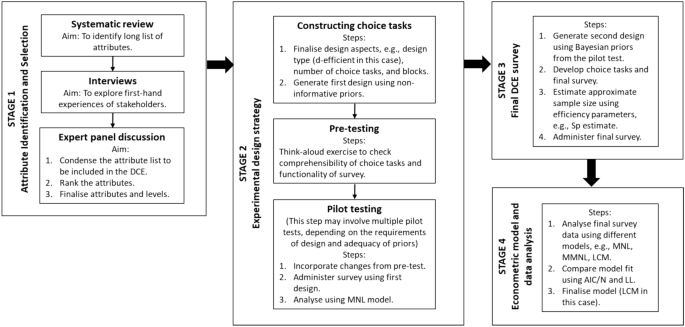
Flowchart of discrete choice experiment study process. MNL multinomial logit, MMNL mixed multinomial logit, LCM latent class model, AIC/N Akaike information criterion/number of observations, LL Log likelihood function
2.1 Stage 1: Attribute Identification and Selection
It is typically recommended to conduct qualitative groundwork to support the identification and selection of attributes [ 23 , 32 , 33 ]. We conducted a systematic review and in-depth interviews to explore a broad range of attributes, followed by expert panel discussions to narrow down the attribute list for inclusion in the DCE. These are explained in detail below.
2.1.1 Systematic Review
We undertook a systematic review to identify a list of attributes. We systematically searched PubMed, Embase, CINAHL, Scopus, and Google Advance databases. After the title and abstract ( n = 6618 papers) and full-text ( n = 16 papers) screening, we obtained a comprehensive list of attributes ( n = 102 attributes, Table 2 of Online Resource 1, see ESM) from international literature. This review is published elsewhere [ 22 ].
2.1.2 Interviews
We interviewed families of children with neurodevelopmental delays to obtain their first-hand experiences regarding follow-up care. Due to the sensitive nature of the condition, recruiting a large number of participants was challenging [ 34 , 35 ]. Moreover, we faced challenges due to attempted imposter participation after recruiting via open postings on social media platforms associated with a neurodevelopment organisation [ 36 ]. This initially caused disruption and delays in the study, and we chose not to use any data collected from the attempted imposter participants. We promptly implemented strategies to prevent such occurrences in subsequent recruitment with a stricter screening process and recruitment via a closed social media page affiliated with the same organisation. In doing so, we were able to recruit two participants for in-depth interviews that provided valuable insights into the topic. Given time and resource limitations we were not able to recruit additional participants. Content analysis of the interview transcripts by PS (and confirmed by BA) identified 14 attributes/themes which aligned with the attributes identified in our systematic review (Table 3 , Online Resource 1, see ESM).
2.1.3 Expert Panel
Limitations, including the cognitive burden on respondents and sample size constraints, prevented the inclusion of all identified possible attributes via the preliminary qualitative work [ 37 ]. Typically, five to seven attributes are ideal for a DCE [ 38 , 39 ]. Consequently, before the expert panel discussion, a team of health economists and a qualitative research expert on neurodevelopment-related care (SK, BA and PS) reviewed the attributes identified from the review and interviews to prioritise their inclusion based on their relevance to the research question and contextual importance in Australia. Irrelevant attributes were excluded, and similar attributes were combined, reducing the list to 11 attributes. (Table 4 , Online Resource 1, ESM).
This was followed by expert panel discussions to further narrow the attribute list. The expert panel ( n = 5) included health economists and qualitative research experts with extensive experience in conducting interviews with a similar cohort, that is, families of children needing neurodevelopment-related care. This exercise was conducted individually with each expert. The 11 attributes were presented to the experts, who discussed and ranked the attributes in the order of their importance, relevance to neurodevelopmental follow-up care for children, and suitability to our research question. Then, all experts gathered to finalise the attributes to be included in the DCE, aiming to reach a consensus via unanimity, ensuring no objections persisted. At this point, seven attributes were finalised. This exercise also included defining the levels of attributes. The final list of attributes and levels and their descriptions are provided in Table 1 .
2.2 Stage 2: Experimental Design Strategy
This stage includes the construction of choice tasks using a suitable experimental design. A choice task includes hypothetical scenarios, each containing a certain number of alternatives [ 21 ]. Those alternatives will comprise the finalised attributes and levels from Stage 1, allowing individuals to choose from them. This is followed by pre-testing and pilot testing of the design to check the functionality of the survey and to obtain suitable priors for the final DCE, respectively.
2.2.1 Constructing Choice Tasks
We included two unlabelled alternatives (Follow-up care A and Follow-up care B) and a ‘neither’ alternative. In this case, neither indicates that respondents do not prefer any of the provided options (A and B), but it does not necessarily mean that they do not prefer follow-up care at all. We employed a dual response approach where respondents were first given three options, ‘A’, ‘B’ and ‘neither’ (unconditional response). If they selected ‘neither,’ they were presented with a forced choice between ‘A’ and ‘B’ (conditional response). The inclusion of a ‘neither’ option was to make the choice tasks more realistic, as in the real world, there may be many scenarios where people do not prefer any available choices. To prevent bias due to the placement order of the alternatives, the position of the ‘neither’ alternative in the choice task was varied randomly.
The below formulae were used to estimate the total number of profiles and pairwise choice tasks, respectively:
Where P is the possible number of profiles and M1, M2, M3 are the number of attributes corresponding to the number of levels (L1, L2, L3) for different attributes [ 40 ]. Given three attributes with three levels (L1 = 3, M1 = 3), two attributes with two levels (L2 = 2, M2 = 2), and two attributes with five levels (L3 = 5, M3 = 2), this would result in 2700 (3 3 × 2 2 × 5 2 ) possible profiles and 3,643,650 combinations of pairwise choice tasks [2700 (2700 – 1)/2]. A full factorial design (a design encompassing all possible combinations of attribute levels) was not possible, so we used a fractional factorial design (a subset of the full design). A d- efficient design was generated using NGENE software [ 41 ].
To estimate the minimum number of choice tasks required for our design, we used the formula:
Where S min is the minimum number of choice tasks, K is the total number of parameters to estimate, and A is the number of alternatives [ 40 ]. According to this, our minimum requirement was eight choice tasks. Usually, this estimate is multiplied by two or three to ensure an adequate sample size for the study. We tested different numbers of choice tasks including 20, 30, 40, 50, and 60 and compared the normalised d- error of each design (Fig. 1 of Online Resource 2, see ESM). Even though the normalised d- error reduced with the increase in number of choice tasks, the design with 30 choice tasks was selected considering it had near-best balance. A design achieves balance when each level of an attribute occurs an equal number of times [ 23 ]. While there is limited existing literature on determining the number of choice tasks per person, eight to 16 tasks are usually considered suitable [ 23 ]. For large designs, it is recommended to use ‘blocks’, which divides the main design into groups to ease the cognitive burden on participants [ 42 ]. Therefore, the 30 choice tasks were divided into three blocks of ten. In the absence of prior information on the coefficients of different attributes, small positive or negative priors (non-informative priors) were used. The design codes are provided in Fig. 2 of Online Resource 2 (see ESM). An example choice task is given in Fig. 2 .

Example of choice set
2.2.2 Pre-Testing
We conducted two think-aloud exercises with ten randomly selected choice tasks from the design [ 43 ]. Participants of the two think-aloud exercises were parents from the general population ( n = 10 and n = 8, respectively). The participants were presented with one choice task at a time and asked to verbalise their thought process in selecting an option from ‘A’, ‘B’, or ‘neither’. They were also requested to indicate if they had problems understanding specific attributes or levels. Their feedback was used to refine the comprehension of choice tasks, including restructuring wording for specific attributes, clarifying the meaning of some levels, providing examples alongside levels for better understanding, and improving the hypothetical scenario provided. Participants also noted that the choice tasks were easy to understand, with seven attributes not overwhelming and ten choice tasks not overly burdensome. After addressing these adjustments, we proceeded with the first pilot test.
2.2.3 Pilot-Testing
The survey was administered to families of children aged below five years, not specifically targeting those with neurodevelopmental disorders. This broader approach was considered to engage a larger audience and obtain a comprehensive perspective. We used PureProfile, an online survey panel, to administer our survey. The survey had four parts: eligibility questions, ten DCE choice tasks, demographic details, and questions related to the comprehensibility of the survey. In addition to these ten choice tasks per participant, a repeated choice task was also included to assess the internal reliability and consistency of responses, creating 11 DCE choice tasks presented to each participant. We received 53 responses. After analysing the data using multinomial logit (MNL) model, using NLOGIT software [ 44 ] (analysis codes are provided in Fig. 3 of Online Resource 2, see ESM), we found that the cost attribute was dominant as its parameter estimate was higher than the rest of the attributes by a large margin. However, about 26% of the respondents, identified through demographic questions, were families or caregivers of children with neurodevelopmental disorders. In this subgroup, cost was not a dominant attribute. Because of this divergent finding, we decided to focus on this population and conducted another pilot study.
For the second pilot, we used the same experimental design as the first pilot and recruited families of children aged under five years with neurodevelopmental delays via PureProfile. The survey was administered, and we received 48 responses. After analysing the data using the MNL model, we found no issues regarding the dominance of any attributes. We used the parameter estimates obtained from this pilot as priors in the main DCE.
2.3 Stage 3: Final DCE Survey
For the final survey, choice sets were generated again in NGENE using priors obtained from the second pilot. We used a Bayesian d- efficient design optimised using a swapped algorithm with two Gauss draws. We compared this design to the second pilot survey design using the ‘eval’ function in NGENE (second pilot d- error = 0.43), and the efficiency of the Bayesian design was improved by 9% (Bayesian d- error = 0.39). The codes are provided in Fig. 4 of Online Resource 2 (see ESM). Bayesian efficient designs are known to enhance the reliability of parameter estimates and reduce sample size requirements [ 45 ]. After a design was produced, the survey was administered. The eligible survey participants were families or caregivers of children < 5 years of age with neurodevelopmental needs. They were recruited via PureProfile. Full DCE survey, participant information sheet, and more information about PureProfile is provided in Online Resource 3 in the ESM.
We used S-estimates to determine our sample size. The S-estimate is the minimum sample size required for a parameter, with Sb mean estimates incorporating the full range of Bayesian priors for a comprehensive interpretation [ 46 ]. In our study, Sb mean estimates indicated a minimum sample size of 11,772, which was impractical. Therefore, we opted for the next largest Sb mean estimate of 105. With a three-block design, our target sample size was approximately 315 participants. We ultimately collected 301 responses from the final DCE survey. More details and explanations on the design, priors, and sample size can be found in Online Resource 4 (see ESM).
2.4 Stage 4: Econometric Model and Data Analysis
A panel mixed multinomial logit (MMNL) model was used to identify the overall preferences at a population level; however, this output was presented in the supplementary information and not in the main analysis (Table 5 , Online Resource 1, ESM). A panel latent class model (LCM) was used and presented as the main analysis due to its ability to account for preference heterogeneity and identify preferences within different groups of the sample [ 47 ]. In this study, we aimed to determine if decisions can be linked to certain demographic groups. By identifying 'latent' or ‘hidden’ groups with distinct preferences and needs, neurodevelopmental care services can be tailored to meet the specific requirements of each group, which may ensure that access to care is provided to maximum families and their children. Moreover, we considered the theoretical interpretability of different models and decided to use panel LCM due to its clearer understanding and potential implications.
Since LCM is probabilistic, respondents belong to a group up to a certain probability and can be allocated the group they are most likely to be a member of [ 40 ]. Posterior probabilities were estimated to describe the differences in sociodemographic characteristics across groups. For each respondent, the posterior probability that they belong to each latent class was calculated and they were assigned to the class with the highest probability. Class membership was determined solely from the estimated preferences from the LCM [ 48 ]. The panel LCM codes are provided in Fig. 5 of Online Resource 2 and information on model fits are provided in Table 6 of Online Resource 1 (see ESM).
The below utility was estimated:
Where V is the observable relative utility and is a function of constant β 0 and 16 parameters measuring the effect of neurodevelopmental follow-up care attributes described in Table 1 .
Descriptive statistics were used to describe demographic characteristics of the overall sample and each latent class. The DCE data were categorical, therefore they were dummy coded. We conducted a scenario analysis (NLOGIT codes provided in Fig. 6 of Online Resource 2, ESM). By controlling attribute levels within hypothetical scenarios, researchers may assess respondents' sensitivity to variations, providing insights into potential policy outcomes, and informing decision-making processes [ 49 , 50 ]. Moreover, to evaluate the extent to which each attribute contributes to the overall utility of follow-up care, we calculated the relative importance of attributes within each class [ 51 ]. To estimate the relative importance of each attribute, the difference between the highest and lowest coefficient of each attribute was divided by the sum of these differences across all attributes [ 48 ].
We performed Monte Carlo simulation to address the uncertainty associated with the parameters used in estimating the relative importance of attributes. For this purpose, a probability distribution was assigned to each parameter, reflecting the uncertainty surrounding its value [ 52 ]. This study used normal distributions (mean and standard error) to represent parameter estimates for each attribute level. Our Monte Carlo simulations consisted of 1000 iterations, whereby values were randomly sampled from the parameter distributions to generate simulated observations. These simulated observations were then used to estimate the mean and 95% confidence intervals of the relative importance of attributes in each class.
All analyses were done using NLOGIT Version 6 software [ 44 ] and R Version 1.3.1093 [ 53 ]. The output from the unconditional dataset was reported as the main result. Due to the small and incomparable sample size, the output from the conditional dataset is presented in Table 7 of Online Resource 1 in the ESM.
3.1 Respondents’ Characteristics
Demographic details of the respondents are presented in Table 2 . Overall, there were more female respondents than male (56.4% and 42.5%, respectively). Most respondents had completed a higher education qualification, including both undergraduate and postgraduate degrees. Over half of the respondents had full-time jobs and earned 60,000–120,000 Australian dollars (AUD). Approximately 64% of the respondents lived in metropolitan cities, and some lived in regional (27%) and rural (7%) areas. The median age of family members was 35 years. Most respondents’ children were diagnosed with ADHD (34%) or ASD (19%).
3.2 DCE Results
3.2.1 latent class analysis.
The results of the panel LCM are provided in Table 3 . We tested the model with two and three classes, and ultimately selected the model with two classes because of its enhanced comprehensibility and clearer interpretability. The probability of individuals being in class 1 is more (63%) than them being in class 2 (37%).
Class 1 had more families with postgraduate degrees, full-time employees, and more individuals with higher incomes living in metropolitan areas when compared with class 2. Conversely, class 2 had more families with undergraduate degrees, part-time or casual employees, slightly lower income, and higher representation of individuals from regional areas when compared with class 1. Both groups showed similar age distributions and types of neurodevelopmental disorders, with most respondents' children diagnosed with ADHD and ASD. However, class 2 had a higher proportion of ADHD and ASD diagnoses, while class 1 had a higher representation of learning disabilities, intellectual disability, and conduct disorder.
The alternative specific constant (ASC) reveals that preferences for follow-up care options A and B were positive in class 1, indicating a tendency for individuals in this class to choose these options over the reference option (neither). On the contrary, preferences were negative in class 2, suggesting a preference against options A and B compared with the reference option. There was a significant heterogeneity regarding these preferences among respondents.
In class 1, local public health community clinics were preferred (0.97, 95% CI 0.45–1.50) when compared with private services. A similar trend was observed in class 2; however, it was not statistically significant. Moreover, city-based hospitals were disliked by families in class 2 (− 0.21, 95% CI − 0.44 to 0.02). Regarding modality of follow-up care, families from class 1 preferred face-to-face follow-up sessions (0.23, 95% CI 0.08–0.38); however, no significant difference was observed in preferences regarding this attribute in class 2. Regarding out-of-pocket costs, even though both classes 1 and 2 preferred to pay at least AUD100, the cost was more crucial in the decision-making process for families in class 2 (2.72, 95% CI 2.27–3.16) compared with those in class 1 (0.50, 95% CI 0.13–0.85). Both class 1 and class 2 preferred having mental health support provided to them (class 1: 0.13, 95% CI 0.01–0.25 and class 2: 0.43, 95% CI 0.23–0.64). While class 1 preferred group activities (0.27, 95% CI 0.06–0.48) and online learning (0.22, 95% CI 0.005–0.43) as ways of receiving educational information, there was no significant difference in the preferences regarding this attribute in class 2. Class 1 preferred health service providers initiating reminders and scheduling appointments for them (0.33, 95% CI 0.21–0.46), whereas class 2 was found to be indifferent to this aspect. Lastly, both classes preferred waiting <3 months for follow-up appointments compared with a waiting time of around 12 months.

3.2.2 Relative Importance
The relative importance of all attributes was estimated for each class and is reported in Table 4 . In class 1, the most important attribute was location, driving 28% of the decision making, followed by cost (26%) and waiting time (16%). In class 2, cost accounted for nearly half of the importance when selecting an alternative (49%).
3.2.3 Scenario Analysis
The scenarios were discussed and finalised by the research team considering their practicality in the real world and alignment with the research question. The scenarios and analysis results are presented in Table 5 . The probabilities of uptake for three hypothetical scenarios were compared with the probability of uptake for the base scenario (with reference levels of all attributes). For the overall sample, the base scenario showed uptake probability of 88.7%. For scenario 1, the probability of uptake increased to 98.6%, making it the most preferred or an ‘ideal’ follow-up care scenario. The probabilities of uptake for scenario 2 and scenario 3 are 88.9% and 96.8%, respectively. While there was not a considerable difference in preferences among all scenarios in class 1, class 2 showed a significantly higher preference for scenario 1 (99%) and a lower preference for scenario 2 (66%).
4 Discussion
The primary aim of this study was to identify families’ preferences for neurodevelopmental follow-up care for children. Overall, the findings suggested that both class 1 and class 2 families preferred accessing local public health community clinics and disliked city-based hospitals. Both classes favoured receiving mental health support and waiting < 3 months. Even though both classes preferred paying AUD100, the next preferred choice for class 1 was AUD500, whereas class 2 preferred no cost. While class 1 liked face-to-face follow-up, group activities for receiving educational information, and health service providers initiating reminders and scheduling appointments for them, no significant differences were observed in preferences regarding these attributes in class 2. The heterogeneity of follow-up care preferences may be of value to policy makers and health services officials that may facilitate care management service improvements for children and families.
Families in both classes preferred local public health community clinics, but this preference was not statistically significant in class 2. There is limited published literature on public care services, particularly for neurodevelopmental follow-up care for children. Some available services, such as Child Development Services in the state of Queensland, Australia, offer formal evaluation and diagnosis of neurodevelopmental delays, which are crucial for obtaining referrals for early interventions [ 54 ]. In a general healthcare context, these facilities may be located closer to home, which may save travel time and improve access, especially in rural or regional areas, and sometimes offer more services compared with private care [ 55 , 56 ]. The cost of private services is relatively high; however, waiting time may be less and some families may be able to pay for private services to bypass public waiting lists. City-based hospitals may not be preferred due to their centralised nature, leading to extra travel time for patients, particularly if the families are from rural or regional areas [ 57 ]. Since there is a higher representation of families from regional areas in class 2, this may explain why they strongly dislike city-based hospitals. Additionally, a higher proportion of lower-income families in class 2 may contribute to their significant dislike, as increased travel time and costs pose a greater burden.
Families in both classes preferred face-to-face follow-up, although this was not statistically significant in class 2. This was somewhat contradictory, as recently, an increased trend of virtual care has been noted due to enhanced convenience and reduced waiting times [ 58 , 59 , 60 ]. Additionally, recent reports from the United States recommend integrating a telehealth model in neurodevelopmental assessments [ 61 , 62 ]. There may be several potential barriers however, including technical issues, difficulty in ensuring confidentiality, limited control over distractions at home, difficulties in administering standardised testing virtually, and access to technology and electronic devices. However, virtual care may be further explored for those services where specialists do not need to physically examine the child. Even though it may improve access and efficiency in follow-up care, facilitating quicker connections for patients needing support and services, further investigation is therefore still required about its implementation to meet both family and heath service needs.
It is likely that the presence of higher-income individuals and more full-time employees in class 1 meant that cost was not the driving factor of decision making in this group. They preferred to pay at least AUD100 or AUD500 for their child’s treatment. Interestingly, the preference for AUD1500 over no cost in class 1 may be perceived as receiving more service benefits and better quality. However, the coefficient for AUD0 was statistically insignificant, so a definitive conclusion should not be made. However, for class 2, which was associated with comparatively lower-income individuals with more part-time or casual jobs, cost was the most crucial deciding factor (nearly 50% relative importance for this attribute). They preferred to pay AUD100 followed by paying no cost. Other studies have shown cost as a crucial factor in decision making [ 63 , 64 , 65 , 66 ], especially for a lower-income group as they often encounter significant financial burden [ 67 , 68 ]. In Australia, the National Disability Insurance Scheme also financially supports those who qualify, but the qualification process may be time consuming and difficult to access for some individuals [ 69 ].
Families of both classes preferred mental health support. Mental health for families may be a lower priority when they are concerned about their children. Previous studies have indicated that parents of children with neurodevelopmental needs often experience poor wellbeing, anxiety, and depression [ 70 , 71 , 72 , 73 ]. Despite this information, very few neurodevelopmental follow-up services have included mental health support for families as a crucial consideration. For example, a cardiac neurodevelopmental programme in Canada counselled 100% of the families in that programme on neurodevelopmental outcomes [ 74 ]. Moreover, studies have reported that financial stress may also negatively influence mental health and wellbeing [ 75 , 76 ], which may be the reason that mental health support was relatively more important for class 2 (more low-income families), but the least important attribute for class 1 (more high-income families). This may inform decision makers to prioritise families’ mental health to reduce burden, improving their resilience related to the neurodevelopmental outcomes of their children.
Providing appropriate educational resources to families regarding neurodevelopmental delays and problems specific to their children is important. Even though class 2 families did not think this attribute was important, class 1 families considered group activities such as playgroups or peer support classes and online learning material helpful. Prior evidence shows that playgroups or peer support activities have been beneficial for families as they offer opportunities to connect with others with similar experiences, feel accepted, enhance their knowledge and skills, as well as provide an environment for child development, socialising, and enjoyment [ 77 , 78 ]. Online learning material or training for families may also be valuable as it may make them self-reliant and skilled at addressing parenting stress or issues with their children, especially if they do not have the time to attend traditional classes [ 79 , 80 ]. Preliminary evidence from a study in Canada indicated high parent satisfaction and improved parenting confidence, parenting skills, and child behaviour with the development of an online training programme that included educational modules and videoconference sessions with a therapist [ 81 ]. On the contrary, educational information provided face-to-face via a professional was not as effective, possibly due to its higher cost or the time commitment required, with sessions typically lasting 45–90 minutes [ 79 , 82 ]. Moreover, studies have shown that using a phone application can be a useful tool for educational information purposes and accessing support related to neurodevelopmental follow-up care [ 83 , 84 ]. It may be interpreted for class 2, which had more families with a lower income, that these educational information methods were not deemed necessary as they may have an additional cost.
In terms of managing appointments, it had no significant effect on class 2 families, but class 1 families preferred health service providers initiating reminders and scheduling appointments for them. A recent study reported that when health service providers scheduled appointments for neurodevelopmental evaluation, adherence was higher compared with when families scheduled appointment themselves [ 85 ]. This may lead to more effective and quick formal evaluations for children, identifying delays earlier and providing appropriate treatments, thus facilitating better patient-centred care. Our interviews confirm that implementing such systems could serve as a safety net. However, flexibility should also be provided based on the availability of family members, hence forming a hybrid care management system.
Waiting time was crucial for both classes. In healthcare, this issue has persisted where people often wait excessively to access services. This may be detrimental in the case of neurodevelopmental issues, as by the time families seek assistance for their child, the issue may have already progressed, with considerable literature highlighting this concern [ 86 , 87 , 88 , 89 , 90 , 91 ]. The latest findings from the Sydney Child Neurodevelopment Research Registry suggest that the average age that caregivers identified developmental concerns was 3 years of age, but the average age for receiving a developmental assessment was about 6 years [ 92 ]. These waiting delays may challenge implementing early intervention and support policies that depend on timely developmental assessments. This is further confirmed by one of our interview participants, who reported waiting for 3 years for their child's follow-up visit. During this waiting period, they experienced anxiety due to uncertainty about their child's condition and the lack of access to suitable treatment or support.
The scenario analysis suggests that there may be a likely impact of different scenarios on programme uptake. It shows the importance of considering various system-level aspects to optimise the effectiveness of neurodevelopmental follow-up care for children and families. Even though the different scenarios did not make notable differences in preference for class 1, the significant uptake increase observed in the first scenario—nearly 10% for the overall sample and nearly 24% for class 2—indicates that future programmes may be designed to account for the preferences identified in that scenario. This may include policies designed to reduce out-of-pocket costs, improve access to local public health community clinics, minimise waiting times, provide families online learning material, promote mental health counselling, and enhance coordination between healthcare providers and families. Other studies have conducted scenario analysis including DCEs regarding maternal health, doctor attendance, vaccination preferences, hypertension management, and environmental health fields [ 49 , 50 , 93 , 94 , 95 , 96 ], consequently informing policy simulations.
4.1 Further Steps
This study has a range of implications. The findings may be useful for Child Health Services and Child Development Services to enhance their neurodevelopmental follow-up care services. Moreover, health insurance policymakers may use these findings to step up to cover the costs of more services, including providing education and mental health support to families. Methodology-wise, DCEs may be conducted considering different perspectives (e.g., taxpayers’ perspective). Since taxpayers fund these services as a society, eliciting their preferences regarding the structure and delivery of care may also be an essential voice. The findings may also be integrated with economic evaluations to predict service uptake or cost effectiveness of neurodevelopmental care services. Furthermore, virtual care solutions may be explored to enhance service accessibility and reduce waiting times. Implementing such strategies may ensure practical use of healthcare resources and improved overall patient experiences. While including children's preferences was outside the scope of this study, it is a crucial area for future research, as also suggested by another study [ 97 ].
4.2 Strengths and Limitations
While this may not be considered as a strength or a limitation, it is worth noting that most of the sample in this study were better educated than the general population, which might imply that they may be more informed and proactive in seeking neurodevelopmental care for their children; this may have influenced preferences and decision-making processes.
It can be challenging to conduct DCEs in neurodevelopment-related contexts. Generating an apt design that focuses on the specific population and is methodologically correct remains imperative. Previous DCEs conducted in this context have evident limitations in their designs. For instance, absence of justification for forced choices (i.e., respondents not having the freedom to opt out if they were not interested in an option [ 98 , 99 ]); using many attributes (e.g., n = 20) and choice tasks (e.g., n = 30) [ 100 , 101 , 102 ]; and not conducting pilot tests [ 10 , 103 ]. These shortcomings were addressed in our study. The inclusion of a ‘neither’ option made the choice task realistic without forcing a participant to choose from the given choices. Our pre-test determined cognitively appropriate numbers of attributes, levels, and choice tasks to ensure that they do not cause a cognitive burden on respondents. The pilot studies informed us about the availability of the target population, due to which the priors we obtained may be comparatively efficient. Several trials in designing the DCE were useful for various reasons, including gaining an understanding of the sample size, obtaining priors, finalising the structure or function of the choice tasks and the overall DCE survey.
Despite several strengths of this study, there were some limitations. Firstly, the qualitative attribute development phase; even though our literature review and expert advice were appropriate for the qualitative groundwork for the DCE, we experienced challenges with recruitment as we encountered a case of participant fraud in online focus groups and interviews. Although it interrupted the study, we identified it early and implemented strategies to prevent this in further recruitment. Moreover, we identified ‘red flags’ for identifying imposter participants in the future [ 36 ]. Secondly, we reported the unconditional dataset as the main output. Even though combining the unconditional and conditional datasets increases the dataset's quality, the combined behavioural model would imply something completely different compared with the unconditional one, which is the true choice of the sample. Thirdly, another limitation of our study is the complexity of the ‘location’ attribute, which may encompass more than just the geographical aspect of healthcare services (e.g., the type of provider). In another instance, the implication of travel time may vary depending on the respondent's location as ‘local’ clinics are often presumed to be nearby for all respondents, while ‘city-based’ hospitals may be more accessible for urban respondents than for those in rural areas. This variability could influence preferences based on individual travel constraints and convenience. Moreover, different levels of the location attribute might imply differences in service quality, and some respondents may have ideological preferences for public versus private providers. Future studies could benefit from disentangling these factors to provide clearer insights into preferences related to healthcare service locations. Fourthly, in terms of analysis, we considered conducting a sub-analysis for various neurodevelopmental disorders, but the sample size (overall and of the two classes) for each diagnostic group were insufficient. Additionally, we did not use a statistical significance test to assess differences between classes as the primary goal of our study was to provide a descriptive overview of the characteristics of the identified latent classes. Given the exploratory nature of our analysis, we aimed to offer an understanding of the profiles within each class rather than to test for statistical differences. Furthermore, the use of statistical significance tests may not be appropriate in this context due to the assumptions required by these tests, which may not be met by the latent class analysis-derived classes. Therefore, we chose to present the descriptive characteristics to highlight the practical relevance and implications of our findings. Lastly, this study represents the combined preferences for all neurodevelopmental disorders or delays. The scope of this study was limited to providing an overview of preferences for informing a healthcare service design perspective rather than individual diagnosis. Given the diversity within neurodevelopmental disorders and individual circumstances, preferences may vary widely among consumers within the same diagnostic category and across different diagnostic groups. Moreover, health system designs internationally have not typically established different health systems and services for individual diagnostic groups, but rather aim to provide comprehensive services that cater to a spectrum of at-risk children regardless of whether they have specific diagnoses upon entering services. Our analysis also supports this information as the sociodemographic characteristic 'types of neurodevelopmental disorders' did not show any evidence suggesting that families of children with different conditions preferred different service models. We have tried to be inclusive of a range of diagnoses and disorders in this study. Therefore, the findings arising from this study should not be interpreted as representing the preferences of all families who may access neurodevelopmental follow-up care.
5 Conclusion
The design and delivery of neurodevelopmental care services for children have room for improvement. We conducted a DCE that identified families’ preferences for neurodevelopmental follow-up care for their children. The findings suggest that health services may benefit from prioritising aspects including making local public health community clinics more accessible, reducing waiting times and costs, providing mental health and educational resources to family members, and organising better care coordination for follow-up visits. Implementing these evidence-based findings may support resource allocation and contribute to improved outcomes for children with neurodevelopmental needs and their families.
Data Availability
The datasets generated and/or analysed during the current study are not publicly available due to privacy considerations as they may contain potentially identifiable information about participants but are available from the corresponding author on reasonable request.
Code Availability
Relevant codes are provided as supplementary material.
Thapar A, Cooper M, Rutter M. Neurodevelopmental disorders. Lancet Psychiatry. 2017;4(4):339–46.
Article PubMed Google Scholar
American Psychiatric Association D, Association AP. Diagnostic and statistical manual of mental disorders: DSM-5. Washington DC: American psychiatric association; 2013.
Book Google Scholar
Yang Y, Zhao S, Zhang M, Xiang M, Zhao J, Chen S, et al. Prevalence of neurodevelopmental disorders among US children and adolescents in 2019 and 2020. Front Psychol. 2022;13: 997648.
Article PubMed PubMed Central Google Scholar
Health AIo, Welfare. Australia's children. Canberra: AIHW. 2022.
McGowan EC, Vohr BR. Neurodevelopmental follow-up of preterm infants: what is new? Pediatr Clin. 2019;66(2):509–23.
Google Scholar
Salt A, Redshaw M. Neurodevelopmental follow-up after preterm birth: follow up after two years. Early Human Dev. 2006;82(3):185–97.
Article Google Scholar
Glenngård AH, Hjelmgren J, Thomsen PH, Tvedten T. Patient preferences and willingness-to-pay for ADHD treatment with stimulants using discrete choice experiment (DCE) in Sweden, Denmark and Norway. Nord J Psychiatry. 2013;67(5):351–9.
Tsai J-H, Crossnohere NL, Strong T, Bridges JF. Measuring meaningful benefit-risk tradeoffs to promote patient-focused drug development in Prader–Willi syndrome: a discrete-choice experiment. MDM Policy Pract. 2021;6(2):23814683211039456.
PubMed PubMed Central Google Scholar
Webb EJ, Lynch Y, Meads D, Judge S, Randall N, Goldbart J, et al. Finding the best fit: examining the decision-making of augmentative and alternative communication professionals in the UK using a discrete choice experiment. BMJ Open. 2019;9(11):e030274.
Fegert JM, Slawik L, Wermelskirchen D, Nuebling M, Muehlbacher A. Assessment of parents’ preferences for the treatment of school-age children with ADHD: a discrete choice experiment. Expert Rev Pharmacoecon Outcomes Res. 2011;11(3):245–52.
Boulton KA, Hodge A, Levu K, Ong N, Silove N, Guastella AJ. Access and barriers to supports for children and caregivers attending public child developmental assessment services: findings from the Sydney child neurodevelopment research registry. Autism Res. 2023;17(3):555–67.
Preece PM, Mott J. Multidisciplinary assessment at a child development centre: do we conform to recommended standards? Child Care Health Dev. 2006;32(5):559–63.
Article CAS PubMed Google Scholar
Harding KE, Lewis AK, Dennett A, Hughes K, Clarke M, Taylor NF. An evidence-based demand management strategy using a hub and spoke training model reduces waiting time for children’s therapy services: an implementation trial. Child Care Health Dev. 2024;50(1): e13154.
Galliver M, Gowling E, Farr W, Gain A, Male I. Cost of assessing a child for possible autism spectrum disorder? An observational study of current practice in child development centres in the UK. BMJ Paediatr Open. 2017;1(1): e000052.
Singhi P, Malhi P. Early diagnosis of autism spectrum disorder: what the pediatricians should know. Indian J Pediatr. 2023;90(4):364–8.
Chen C, Bailey C, Baikie G, Dalziel K, Hua X. Parents of children with disability: mental health outcomes and utilization of mental health services. Disabil Health J. 2023;16(4): 101506.
Ahmed R, Borst JM, Yong CW, Aslani P. Do parents of children with attention-deficit/hyperactivity disorder (ADHD) receive adequate information about the disorder and its treatments? A qualitative investigation. Patient preference and adherence. 2014;8:661–70.
Bailes AF, Gannotti M, Bellows DM, Shusterman M, Lyman J, Horn SD. Caregiver knowledge and preferences for gross motor function information in cerebral palsy. Dev Med Child Neurol. 2018;60(12):1264–70.
Davis CC, Claudius M, Palinkas LA, Wong JB, Leslie LK. Putting families in the center: family perspectives on decision making and ADHD and implications for ADHD care. J Atten Disord. 2012;16(8):675–84.
Kawarai S, Symon JB, Hernández A, Fryling MJ. Assessing preferences among behavioral interventions with Japanese parents of children with developmental disabilities. Child Fam Behav Ther. 2017;39(3):191–9.
de Bekker-Grob EW, Ryan M, Gerard K. Discrete choice experiments in health economics: a review of the literature. Health Econ. 2012;21(2):145–72.
Sharma P, Kularatna S, Abell B, Eagleson K, Vo LK, Halahakone U, et al. Preferences in the design and delivery of neurodevelopmental follow-up care for children: a systematic review of discrete choice experiments. Patient Prefer Adherence. 2023;17:2325–41.
Bridges JFP, Hauber AB, Marshall D, Lloyd A, Prosser LA, Regier DA, et al. Conjoint analysis applications in health—a checklist: a report of the ISPOR good research practices for conjoint analysis task force. Value Health. 2011;14(4):403–13.
Johnson FR, Lancsar E, Marshall D, Kilambi V, Mühlbacher A, Regier DA, et al. Constructing experimental designs for discrete-choice experiments: report of the ISPOR conjoint analysis experimental design good research practices task force. Value Health. 2013;16(1):3–13.
Hauber AB, González JM, Groothuis-Oudshoorn CG, Prior T, Marshall DA, Cunningham C, et al. Statistical methods for the analysis of discrete choice experiments: a report of the ISPOR conjoint analysis good research practices task force. Value Health. 2016;19(4):300–15.
Johnson FR, Adamowicz W, Groothuis-Oudshoorn C. What can discrete-choice experiments tell us about patient preferences? An introduction to quantitative analysis of choice data. Patient Patient Center Outcomes Res. 2024;24:1–16.
Whitty JA, Lancsar E, De Abreu Lourenco R, Howard K, Stolk EA. Putting the choice in choice tasks: incorporating preference elicitation tasks in health preference research. Patient Patient Center Outcomes Res. 2024;14:1–9.
Lancsar E, Louviere J. Conducting discrete choice experiments to inform healthcare decision making: a user’s guide. Pharmacoeconomics. 2008;26:661–77.
Kularatna S, Allen M, Hettiarachchi RM, Crawford-Williams F, Senanayake S, Brain D, et al. Cancer survivor preferences for models of breast cancer follow-up care: selecting attributes for inclusion in a discrete choice experiment. Patient Patient Center Outcomes Res. 2023;16(4):371–83.
Senanayake S, Barnett A, Brain D, Allen M, Powell EE, O’Beirne J, et al. A discrete choice experiment to elicit preferences for a chronic disease screening programme in Queensland Australia. Public Health. 2024;228:105–11.
Mohammed Selim S, Senanayake S, McPhail SM, Carter HE, Naicker S, Kularatna S. Consumer preferences for a healthcare appointment reminder in australia: a discrete choice experiment. Patient Patient Center Outcomes Res. 2024;11:1–14.
Hollin IL, Craig BM, Coast J, Beusterien K, Vass C, DiSantostefano R, et al. Reporting formative qualitative research to support the development of quantitative preference study protocols and corresponding survey instruments: guidelines for authors and reviewers. Patient Patient Center Outcomes Res. 2020;13:121–36.
Coast J, Horrocks S. Developing attributes and levels for discrete choice experiments using qualitative methods. J Health Serv Res Policy. 2007;12(1):25–30.
Ellard-Gray A, Jeffrey NK, Choubak M, Crann SE. Finding the hidden participant: solutions for recruiting hidden, hard-to-reach, and vulnerable populations. Int J Qual Methods. 2015;14(5):1609406915621420.
Hoppitt T, Shah S, Bradburn P, Gill P, Calvert M, Pall H, et al. Reaching the ‘hard to reach’: strategies to recruit black and minority ethnic service users with rare long-term neurological conditions. Int J Soc Res Methodol. 2012;15(6):485–95.
Sharma P, McPhail SM, Kularatna S, Senanayake S, Abell B. Navigating the challenges of imposter participants in online qualitative research: lessons learned from a paediatric health services study. BMC Health Serv Res. 2024;24(1):724.
De Brún A, Flynn D, Ternent L, Price CI, Rodgers H, Ford GA, et al. A novel design process for selection of attributes for inclusion in discrete choice experiments: case study exploring variation in clinical decision-making about thrombolysis in the treatment of acute ischaemic stroke. BMC Health Serv Res. 2018;18:1–14.
Webb EJD, Meads D, Lynch Y, Judge S, Randall N, Goldbart J, et al. Attribute selection for a discrete choice experiment incorporating a best-worst scaling survey. Value Health. 2021;24(4):575–84.
Marshall D, Bridges JF, Hauber B, Cameron R, Donnalley L, Fyie K, et al. Conjoint analysis applications in health—how are studies being designed and reported? An update on current practice in the published literature between 2005 and 2008. Patient Patient Center Outcomes Res. 2010;3:249–56.
Hensher D, Rose J, Greene W. Applied choice analysis-second Edi. ed. Cambridge University Press, The University Printing House, Cambridge CB2 8RU, UK; 2015.
ChoiceMetrics N. 1.2 User manual & reference guide, Australia. 2012.
Soekhai V, de Bekker-Grob EW, Ellis AR, Vass CM. Discrete choice experiments in health economics: past, present and future. Pharmacoeconomics. 2019;37:201–26.
Campoamor NB, Guerrini CJ, Brooks WB, Bridges JF, Crossnohere NL. Pretesting discrete-choice experiments: a guide for researchers. Patient Patient Center Outcomes Res. 2024;17(2):109–20.
Greene WH. NLOGIT reference guide : version 3.0: Plainview. Econometric Software, Inc., New York. 2002.
Bliemer MCJ, Rose JM, Hess S. Approximation of bayesian efficiency in experimental choice designs. J Choice Model. 2008;1(1):98–126.
Rose JM, Bliemer MCJ. Sample size requirements for stated choice experiments. Transportation. 2013;40(5):1021–41.
Lancsar E, Fiebig DG, Hole AR. Discrete choice experiments: a guide to model specification, estimation and software. Pharmacoeconomics. 2017;35:697–716.
Hoedemakers M, Karimi M, Jonker M, Tsiachristas A, Rutten-van MM. Heterogeneity in preferences for outcomes of integrated care for persons with multiple chronic diseases: a latent class analysis of a discrete choice experiment. Qual Life Res. 2022;31(9):2775–89.
Borriello A, Master D, Pellegrini A, Rose JM. Preferences for a COVID-19 vaccine in Australia. Vaccine. 2021;39(3):473–9.
Angell B, Khan M, Islam MR, Mandeville K, Naher N, Hutchinson E, et al. Incentivising doctor attendance in rural Bangladesh: a latent class analysis of a discrete choice experiment. BMJ Glob Health. 2021;6(7): e006001.
Gonzalez JM. A guide to measuring and interpreting attribute importance. Patient Patient Center Outcomes Res. 2019;12(3):287–95.
Harrison RL (ed) Introduction to monte carlo simulation. In: AIP conference proceedings. NIH Public Access. 2010;1204:17.
R. A language and environment for statistical computing. In: R Foundation for Statistical Computing V, Austria, editor. 1.3.1093 ed. Vienna, Austria: R Core Team 2021.
Eagleson K, Campbell M, McAlinden B, Heussler H, Pagel S, Webb KL, et al. Congenital Heart Disease Long-term Improvement in Functional hEalth (CHD LIFE): a partnership programme to improve the long-term functional health of children with congenital heart disease in Queensland. J Paediatr Child Health. 2020;56(7):1003–9.
Duckett SJ. Living in the parallel universe in Australia: public Medicare and private hospitals. CMAJ. 2005;173(7):745–7.
Ward PR, Rokkas P, Cenko C, Pulvirenti M, Dean N, Carney AS, et al. ‘Waiting for’and ‘waiting in’public and private hospitals: a qualitative study of patient trust in South Australia. BMC Health Serv Res. 2017;17:1–11.
Abell BR, Eagleson K, Auld B, Bora S, Justo R, Parsonage W, et al. Implementing neurodevelopmental follow-up care for children with congenital heart disease: a scoping review with evidence mapping. Dev Med Child Neurol. 2024;66(2):161–75.
Jamieson T, Wallace R, Armstrong K, Agarwal P, Griffin B, Wong I, et al. Virtual care: a framework for a patient-centric system. Toronto: Women’s College Hospital Institute for Health Systems Solutions and Virtual Care; 2015. p. 11.
Donelan K, Barreto EA, Sossong S, Michael C, Estrada JJ, Cohen AB, et al. Patient and clinician experiences with telehealth for patient follow-up care. Am J Manag Care. 2019;25(1):40–4.
PubMed Google Scholar
Barsom EZ, Jansen M, Tanis PJ, van de Ven AW, Blussé van Oud-Alblas M, Buskens CJ, et al. Video consultation during follow up care: effect on quality of care and patient-and provider attitude in patients with colorectal cancer. Surg Endosc. 2021;35:1278–87.
Cox SM, Butcher JL, Sadhwani A, Sananes R, Sanz JH, Blumenfeld E, et al. Integrating telehealth into neurodevelopmental assessment: a model from the cardiac neurodevelopmental outcome collaborative. J Pediatr Psychol. 2022;47(6):707–13.
Kasparian NA, Sadhwani A, Sananes R, Blumenfeld E, Butcher JL, Cassidy AR, et al. Telehealth services for cardiac neurodevelopmental care during the COVID-19 pandemic: a site survey from the Cardiac Neurodevelopmental Outcome Collaborative. Cardiol Young. 2023;33(2):280–7.
Carlsson F, Martinsson P. How much is too much? An investigation of the effect of the number of choice sets, context dependence and the choice of bid vectors in choice experiments. Environ Resource Econ. 2008;40:165–76.
Regier DA, Diorio C, Ethier M-C, Alli A, Alexander S, Boydell KM, et al. Discrete choice experiment to evaluate factors that influence preferences for antibiotic prophylaxis in pediatric oncology. PLoS ONE 2012;7(10): e47470.
Najafzadeh M, Johnston KM, Peacock SJ, Connors JM, Marra MA, Lynd LD, et al. Genomic testing to determine drug response: measuring preferences of the public and patients using Discrete Choice Experiment (DCE). BMC Health Serv Res. 2013;13:1–12.
Ngorsuraches S, Thongkeaw K. Patients’ preferences and willingness-to-pay for postmenopausal hormone receptor-positive, HER2-negative advanced breast cancer treatments after failure of standard treatments. Springerplus. 2015;4:1–11.
Kullgren JT, Galbraith AA, Hinrichsen VL, Miroshnik I, Penfold RB, Rosenthal MB, et al. Health care use and decision making among lower-income families in high-deductible health plans. Arch Intern Med. 2010;170(21):1918–25.
Ketsche P, Adams EK, Wallace S, Kannan VD, Kannan H. Lower-income families pay a higher share of income toward national health care spending than higher-income families do. Health Aff. 2011;30(9):1637–46.
Foster M, Henman P, Tilse C, Fleming J, Allen S, Harrington R. ‘Reasonable and necessary’care: the challenge of operationalising the NDIS policy principle in allocating disability care in Australia. Aust J Soc Issues. 2016;51(1):27–46.
Wang L, Li D, Pan S, Zhai J, Xia W, Sun C, et al. The relationship between 2019-nCoV and psychological distress among parents of children with autism spectrum disorder. Glob Health. 2021;17(1):23.
McCann D. Making the invisible visible: home care provided by parents of children with complex needs: University Of Tasmania. 2016. https://doi.org/10.25959/23240468.v1
Bayer ND, Wang H, Yu JA, Kuo DZ, Halterman JS, Li Y. A national mental health profile of parents of children with medical complexity. Pediatrics. 2021;148(2).
Bolduc M-E, Rennick JE, Gagnon I, Sokol E, Majnemer A, Brossard-Racine M. Navigating the healthcare system with my child with CHD: parental perspectives on developmental follow-up practices. Cardiol Young. 2024;34(1):37–43.
Roberts SD, Kazazian V, Ford MK, Marini D, Miller SP, Chau V, et al. The association between parent stress, coping and mental health, and neurodevelopmental outcomes of infants with congenital heart disease. Clin Neuropsychol. 2021;35(5):948–72.
Wray TB, Dvorak RD, Martin SL. Demographic and economic predictors of mental health problems and contact with treatment resources among adults in a low-income primary care setting. Psychol Health Med. 2013;18(2):213–22.
Sareen J, Afifi TO, McMillan KA, Asmundson GJ. Relationship between household income and mental disorders: findings from a population-based longitudinal study. Arch Gen Psychiatry. 2011;68(4):419–27.
Armstrong J, Elliott C, Davidson E, Mizen J, Wray J, Girdler S. The Power of playgroups: key components of supported and therapeutic playgroups from the perspective of parents. Aust Occup Ther J. 2021;68(2):144–55.
Armstrong J, Elliott C, Wray J, Davidson E, Mizen J, Girdler S. Defining therapeutic playgroups: key principles of therapeutic playgroups from the perspective of professionals. J Child Fam Stud. 2020;29:1029–43.
Tan-MacNeill KM, Smith IM, Johnson SA, Chorney J, Corkum P. A systematic review of online parent-implemented interventions for children with neurodevelopmental disorders. Child Health Care. 2021;50(3):239–77.
Yamanaka T, Yuruki K, Sanabe Y, Yasutake M, Inoue M. Assessing the effectiveness of real-time online parent training for parents of children with diverse neurodevelopmental disorders residing in the community. Yonago Acta Med. 2023;66(4):448–58.
Burek B, Ford MK, Hooper M, Green R, Kohut SA, Andrade BF, et al. Transdiagnostic feasibility trial of internet-based parenting intervention to reduce child behavioural difficulties associated with congenital and neonatal neurodevelopmental risk: introducing I-InTERACT-North. Clin Neuropsychol. 2021;35(5):1030–52.
Roberts CA, Smith KC, Sherman AK. Comparison of online and face-to-face parent education for children with autism and sleep problems. J Autism Dev Disord. 2019;49:1410–22.
Pelser K-B. Using a cell phone application to support caregivers of children with Autism Spectrum Disorder: University of Pretoria (South Africa). Thesis. 2019.
Haque MM, Rabbani M, Dipal DD, Zarif MII, Iqbal A, Akhter S, et al. Grant report on mCARE: mobile-based care for children with autism spectrum disorder (ASD) for low-and middle-income countries (LMICs). J Psychiat Brain Sci. 2021;6.
Ortinau CM, Wypij D, Ilardi D, Rofeberg V, Miller TA, Donohue J, et al. Factors associated with attendance for cardiac neurodevelopmental evaluation. Pediatrics. 2023;152(3): e2022060995.
Creen J, Kennedy-Behr A, Gee K, Wilks L, Verdonck M. Reducing time between referral and diagnosis in paediatric outpatient neurodevelopmental and behavioural clinics. J Paediatr Child Health. 2021;57(1):126–31.
Enneking B, Ryan T, Tang Q, James C, Rouse M, Curtin M, et al. Acceptability and access metrics for telehealth consultation of pediatric neurodevelopmental disabilities during COVID-19. J Pediatr Health Care. 2023;37(2):200–7.
Kanne SM, Bishop SL. Editorial perspective: the autism waitlist crisis and remembering what families need. J Child Psychol Psychiatry. 2021;62(2):140–2.
Keehn RM, Tomlin A, Ciccarelli MR. COVID-19 pandemic highlights access barriers for children with autism spectrum disorder. J Dev Behav Pediatr. 2021;42(7):599–601.
Article PubMed Central Google Scholar
Constantino JN, Abbacchi AM, Saulnier C, Klaiman C, Mandell DS, Zhang Y, et al. Timing of the diagnosis of autism in African American children. Pediatrics. 2020;146(3).
Wiggins LD, Durkin M, Esler A, Lee LC, Zahorodny W, Rice C, et al. Disparities in documented diagnoses of autism spectrum disorder based on demographic, individual, and service factors. Autism Res. 2020;13(3):464–73.
Boulton KA, Hodge M-A, Jewell A, Ong N, Silove N, Guastella AJ. Diagnostic delay in children with neurodevelopmental conditions attending a publicly funded developmental assessment service: findings from the Sydney Child Neurodevelopment Research Registry. BMJ Open. 2023;13(2): e069500.
Fletcher B, Hinton L, McManus R, Rivero-Arias O. Patient preferences for management of high blood pressure in the UK: a discrete choice experiment. Br J Gen Pract. 2019;69(686):e629–37.
Khan S, Yao L, Khan ZA, Ali U, Zhao M. Exploring stakeholder preferences and spatial heterogeneity in policy scenario analysis for vulnerable ecosystems: a choice experiment approach. Ecol Ind. 2023;153: 110438.
Byun H, Shin J, Lee C-Y. Using a discrete choice experiment to predict the penetration possibility of environmentally friendly vehicles. Energy. 2018;144:312–21.
Fletcher BR, Rowe R, Hollowell J, Scanlon M, Hinton L, Rivero-Arias O. Exploring women’s preferences for birth settings in England: a discrete choice experiment. PLoS One. 2019;14(4): e0215098.
Article CAS PubMed PubMed Central Google Scholar
Stafford L. ‘What about my voice’: emancipating the voices of children with disabilities through participant-centred methods. Child Geograph. 2017;15(5):600–13.
Mühlbacher AC, Rudolph I, Lincke H-J, Nübling M. Preferences for treatment of attention-deficit/hyperactivity disorder (ADHD): a discrete choice experiment. BMC Health Serv Res. 2009;9(1):1–10.
Waschbusch DA, Cunningham CE, Pelham WE Jr, Rimas HL, Greiner AR, Gnagy EM, et al. A discrete choice conjoint experiment to evaluate parent preferences for treatment of young, medication naive children with ADHD. J Clin Child Adolesc Psychol. 2011;40(4):546–61.
Cunningham CE, Deal K, Rimas H, Buchanan DH, Gold M, Sdao-Jarvie K, et al. Modeling the information preferences of parents of children with mental health problems: a discrete choice conjoint experiment. J Abnorm Child Psychol. 2008;36:1123–38.
Wymbs FA, Chen Y, Rimas HM, Deal K, Waschbusch DA, Pelham WE. Examining parents’ preferences for group parent training for ADHD when individual parent training is unavailable. J Child Fam Stud. 2017;26:888–904.
Wymbs FA, Cunningham CE, Chen Y, Rimas HM, Deal K, Waschbusch DA, et al. Examining parents’ preferences for group and individual parent training for children with ADHD symptoms. J Clin Child Adolesc Psychol. 2016;45(5):614–31.
Cross J, Yang J-C, Johnson FR, Quiroz J, Dunn J, Raspa M, et al. Caregiver preferences for the treatment of males with fragile X syndrome. J Dev Behav Pediatr. 2016;37(1):71–9.
Download references
Open Access funding enabled and organized by CAUL and its Member Institutions. This work is part of a programme of research funded through a Medical Research Future Fund (MRFF) Congenital Heart Disease Grant (ARGCHDG0035) 2020-2024. This funder did not have any role in the study design, data collection and analysis, decision to publish, or preparation of the manuscript.
Author information
Authors and affiliations.
Australian Centre for Health Services Innovation and Centre for Healthcare Transformation, School of Public Health and Social Work, Queensland University of Technology, 60 Musk Avenue, Kelvin Grove, Brisbane, QLD, 4059, Australia
Pakhi Sharma, Sanjeewa Kularatna, Bridget Abell, Steven M. McPhail & Sameera Senanayake
Health Services and Systems Research, Duke-NUS Medical School, Singapore, Singapore
Sanjeewa Kularatna & Sameera Senanayake
Digital Health and Informatics Directorate, Metro South Health, Brisbane, QLD, Australia
Steven M. McPhail
You can also search for this author in PubMed Google Scholar
Contributions
Pakhi Sharma: Conceptualization, Data curation, Methodology, Formal analysis, Investigation, Software, Writing—Original Draft, Writing—Review & Editing. Sanjeewa Kularatna: Conceptualization, Data curation, Methodology, Validation, Resources, Writing—Review & Editing, Supervision, Project administration, Funding acquisition. Bridget Abell: Conceptualization, Data curation, Methodology, Investigation, Formal analysis, Validation, Resources, Writing—Review & Editing, Supervision. Steven M. McPhail: Conceptualization, Methodology, Validation, Resources, Writing—Review & Editing, Supervision, Project administration, Funding acquisition. Sameera Senanayake: Conceptualization, Data curation, Methodology, Investigation, Formal analysis, Validation, Resources, Software, Writing—Review & Editing, Supervision.
Corresponding author
Correspondence to Pakhi Sharma .
Ethics declarations
Conflict of interest.
The authors declare no conflict of interest.
Ethics approval and participant consent
This study was approved by the Human Research Ethics Committee, Queensland University of Technology (approval number: 6468). Written consent was obtained from all the participants for both the interviews and the DCE survey.
Consent for publication
Not applicable.
Supplementary Information
Below is the link to the electronic supplementary material.
Supplementary file1 (PDF 353 kb)
Supplementary file2 (pdf 293 kb), supplementary file3 (pdf 342 kb), supplementary file4 (pdf 153 kb), rights and permissions.
Open Access This article is licensed under a Creative Commons Attribution-NonCommercial 4.0 International License, which permits any non-commercial use, sharing, adaptation, distribution and reproduction in any medium or format, as long as you give appropriate credit to the original author(s) and the source, provide a link to the Creative Commons licence, and indicate if changes were made. The images or other third party material in this article are included in the article's Creative Commons licence, unless indicated otherwise in a credit line to the material. If material is not included in the article's Creative Commons licence and your intended use is not permitted by statutory regulation or exceeds the permitted use, you will need to obtain permission directly from the copyright holder. To view a copy of this licence, visit http://creativecommons.org/licenses/by-nc/4.0/ .
Reprints and permissions
About this article
Sharma, P., Kularatna, S., Abell, B. et al. Preferences for Neurodevelopmental Follow-Up Care for Children: A Discrete Choice Experiment. Patient (2024). https://doi.org/10.1007/s40271-024-00717-3
Download citation
Accepted : 18 August 2024
Published : 29 August 2024
DOI : https://doi.org/10.1007/s40271-024-00717-3
Share this article
Anyone you share the following link with will be able to read this content:
Sorry, a shareable link is not currently available for this article.
Provided by the Springer Nature SharedIt content-sharing initiative
- Find a journal
- Publish with us
- Track your research
An official website of the United States government
The .gov means it’s official. Federal government websites often end in .gov or .mil. Before sharing sensitive information, make sure you’re on a federal government site.
The site is secure. The https:// ensures that you are connecting to the official website and that any information you provide is encrypted and transmitted securely.
- Publications
- Account settings
Preview improvements coming to the PMC website in October 2024. Learn More or Try it out now .
- Advanced Search
- Journal List
- Indian J Sex Transm Dis AIDS
- v.35(2); Jul-Dec 2014
Reviewing literature for research: Doing it the right way
Shital amin poojary.
Department of Dermatology, K J Somaiya Medical College, Mumbai, Maharashtra, India
Jimish Deepak Bagadia
In an era of information overload, it is important to know how to obtain the required information and also to ensure that it is reliable information. Hence, it is essential to understand how to perform a systematic literature search. This article focuses on reliable literature sources and how to make optimum use of these in dermatology and venereology.
INTRODUCTION
A thorough review of literature is not only essential for selecting research topics, but also enables the right applicability of a research project. Most importantly, a good literature search is the cornerstone of practice of evidence based medicine. Today, everything is available at the click of a mouse or at the tip of the fingertips (or the stylus). Google is often the Go-To search website, the supposed answer to all questions in the universe. However, the deluge of information available comes with its own set of problems; how much of it is actually reliable information? How much are the search results that the search string threw up actually relevant? Did we actually find what we were looking for? Lack of a systematic approach can lead to a literature review ending up as a time-consuming and at times frustrating process. Hence, whether it is for research projects, theses/dissertations, case studies/reports or mere wish to obtain information; knowing where to look, and more importantly, how to look, is of prime importance today.
Literature search
Fink has defined research literature review as a “systematic, explicit and reproducible method for identifying, evaluating, and synthesizing the existing body of completed and recorded work produced by researchers, scholars and practitioners.”[ 1 ]
Review of research literature can be summarized into a seven step process: (i) Selecting research questions/purpose of the literature review (ii) Selecting your sources (iii) Choosing search terms (iv) Running your search (v) Applying practical screening criteria (vi) Applying methodological screening criteria/quality appraisal (vii) Synthesizing the results.[ 1 ]
This article will primarily concentrate on refining techniques of literature search.
Sources for literature search are enumerated in Table 1 .
Sources for literature search

PubMed is currently the most widely used among these as it contains over 23 million citations for biomedical literature and has been made available free by National Center for Biotechnology Information (NCBI), U.S. National Library of Medicine. However, the availability of free full text articles depends on the sources. Use of options such as advanced search, medical subject headings (MeSH) terms, free full text, PubMed tutorials, and single citation matcher makes the database extremely user-friendly [ Figure 1 ]. It can also be accessed on the go through mobiles using “PubMed Mobile.” One can also create own account in NCBI to save searches and to use certain PubMed tools.

PubMed home page showing location of different tools which can be used for an efficient literature search
Tips for efficient use of PubMed search:[ 2 , 3 , 4 ]
Use of field and Boolean operators
When one searches using key words, all articles containing the words show up, many of which may not be related to the topic. Hence, the use of operators while searching makes the search more specific and less cumbersome. Operators are of two types: Field operators and Boolean operators, the latter enabling us to combine more than one concept, thereby making the search highly accurate. A few key operators that can be used in PubMed are shown in Tables Tables2 2 and and3 3 and illustrated in Figures Figures2 2 and and3 3 .
Field operators used in PubMed search

Boolean operators used in PubMed search

PubMed search results page showing articles on donovanosis using the field operator [TIAB]; it shows all articles which have the keyword “donovanosis” in either title or abstract of the article

PubMed search using Boolean operators ‘AND’, ‘NOT’; To search for articles on treatment of lepra reaction other than steroids, after clicking the option ‘Advanced search’ on the home page, one can build the search using ‘AND’ option for treatment and ‘NOT’ option for steroids to omit articles on steroid treatment in lepra reaction
Use of medical subject headings terms
These are very specific and standardized terms used by indexers to describe every article in PubMed and are added to the record of every article. A search using MeSH will show all articles about the topic (or keywords), but will not show articles only containing these keywords (these articles may be about an entirely different topic, but still may contain your keywords in another context in any part of the article). This will make your search more specific. Within the topic, specific subheadings can be added to the search builder to refine your search [ Figure 4 ]. For example, MeSH terms for treatment are therapy and therapeutics.

PubMed search using medical subject headings (MeSH) terms for management of gonorrhea. Click on MeSH database ( Figure 1 ) →In the MeSH search box type gonorrhea and click search. Under the MeSH term gonorrhea, there will be a list of subheadings; therapy, prevention and control, click the relevant check boxes and add to search builder →Click on search →All articles on therapy, prevention and control of gonorrhea will be displayed. Below the subheadings, there are two options: (1) Restrict to medical subject headings (MeSH) major topic and (2) do not include MeSH terms found below this term in the MeSH hierarchy. These can be used to further refine the search results so that only articles which are majorly about treatment of gonorrhea will be displayed
Two additional options can be used to further refine MeSH searches. These are located below the subheadings for a MeSH term: (1) Restrict to MeSH major topic; checking this box will retrieve articles which are majorly about the search term and are therefore, more focused and (2) Do not include MeSH terms found below this term in the MeSH hierarchy. This option will again give you more focused articles as it excludes the lower specific terms [ Figure 4 ].
Similar feature is available with Cochrane library (also called MeSH), EMBASE (known as EMTREE) and PsycINFO (Thesaurus of Psychological Index Terms).
Saving your searches
Any search that one has performed can be saved by using the ‘Send to’ option and can be saved as a simple word file [ Figure 5 ]. Alternatively, the ‘Save Search’ button (just below the search box) can be used. However, it is essential to set up an NCBI account and log in to NCBI for this. One can even choose to have E-mail updates of new articles in the topic of interest.

Saving PubMed searches. A simple option is to click on the dropdown box next to ‘Send to’ option and then choose among the options. It can be saved as a text or word file by choosing ‘File’ option. Another option is the “Save search” option below the search box but this will require logging into your National Center for Biotechnology Information account. This however allows you to set up alerts for E-mail updates for new articles
Single citation matcher
This is another important tool that helps to find the genuine original source of a particular research work (when few details are known about the title/author/publication date/place/journal) and cite the reference in the most correct manner [ Figure 6 ].

Single citation matcher: Click on “Single citation matcher” on PubMed Home page. Type available details of the required reference in the boxes to get the required citation
Full text articles
In any search clicking on the link “free full text” (if present) gives you free access to the article. In some instances, though the published article may not be available free, the author manuscript may be available free of charge. Furthermore, PubMed Central articles are available free of charge.
Managing filters
Filters can be used to refine a search according to type of article required or subjects of research. One can specify the type of article required such as clinical trial, reviews, free full text; these options are available on a typical search results page. Further specialized filters are available under “manage filters:” e.g., articles confined to certain age groups (properties option), “Links” to other databases, article specific to particular journals, etc. However, one needs to have an NCBI account and log in to access this option [ Figure 7 ].

Managing filters. Simple filters are available on the ‘search results’ page. One can choose type of article, e.g., clinical trial, reviews etc. Further options are available in the “Manage filters” option, but this requires logging into National Center for Biotechnology Information account
The Cochrane library
Although reviews are available in PubMed, for systematic reviews and meta-analysis, Cochrane library is a much better resource. The Cochrane library is a collection of full length systematic reviews, which can be accessed for free in India, thanks to Indian Council of Medical Research renewing the license up to 2016, benefitting users all over India. It is immensely helpful in finding detailed high quality research work done in a particular field/topic [ Figure 8 ].

Cochrane library is a useful resource for reliable, systematic reviews. One can choose the type of reviews required, including trials
An important tool that must be used while searching for research work is screening. Screening helps to improve the accuracy of search results. It is of two types: (1) Practical: To identify a broad range of potentially useful studies. Examples: Date of publication (last 5 years only; gives you most recent updates), participants or subjects (humans above 18 years), publication language (English only) (2) methodological: To identify best available studies (for example, excluding studies not involving control group or studies with only randomized control trials).
Selecting the right quality of literature is the key to successful research literature review. The quality can be estimated by what is known as “The Evidence Pyramid.” The level of evidence of references obtained from the aforementioned search tools are depicted in Figure 9 . Systematic reviews obtained from Cochrane library constitute level 1 evidence.

Evidence pyramid: Depicting the level of evidence of references obtained from the aforementioned search tools
Thus, a systematic literature review can help not only in setting up the basis of a good research with optimal use of available information, but also in practice of evidence-based medicine.
Source of Support: Nil.
Conflict of Interest: None declared.
Unfortunately we don't fully support your browser. If you have the option to, please upgrade to a newer version or use Mozilla Firefox , Microsoft Edge , Google Chrome , or Safari 14 or newer. If you are unable to, and need support, please send us your feedback .
We'd appreciate your feedback. Tell us what you think! opens in new tab/window
Welcome to Elsevier Connect
News, information and features for the research, health and technology communities

In the spotlight
Not alone: leaders in focus.
Uncover unfiltered perspectives on global issues by research and academic leaders.
Featured articles:
Evidence-based assessment, equity and opportunity
Universities must be catalysts for sustainable development
Turning the supertanker: How do we steer research universities (even more) towards impact?
Leadership diversity: Living your values at the highest levels

Partnering for an open future: Sharing successes and lessons learned
Hear from library leaders on the institutional impact of transformative agreements and discover more about achieving sustainable open access.

Latest articles

Sustainable development in the age of AI

Future-proofing the workforce in engineering R&D

Encouraging innovation and commercialization as an academic leader

If you want your research to have impact, don’t underestimate the power of communication
More articles.

Towards the 4th generation university: a collaboration between Elsevier and TU Eindhoven

AI for Science: a paradigm shift for scientific discovery and translation

I’m my skin color, my culture and my gender — but I’m also just me

Finding new therapeutics in fungi
Authors' update.

Five great reasons to showcase your societal impact
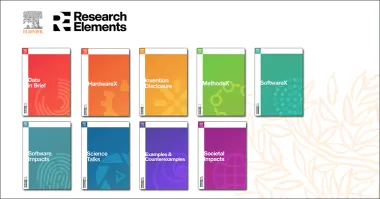
Meet the journals breaking the traditional research article mold

Manuscript rejected? Five insider tips to see you to success

Seven top tips on stopping APC scams
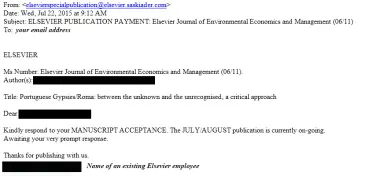
Beware of fraudulent emails requesting payment

Breaking down barriers: perspectives on why good research communication is a must

Five things every researcher should know about image manipulation

How two insure your on track four publication: the importance of good manuscript language

In the eye of the beholder

The importance of remaining accountable

Location, location, location - where to get published

CRediT where credit's due

Never miss out on a special issue again

Finding the best journal for a paper

The lasting language of publication? - Part II

The lasting language of publication?

Eight lessons from the webinar "article to art: creating visual abstracts"

Ten essential tips to ensure the integrity of your research
Editors' update.

Announcing the new “Evaluate Manuscript”

Top tips on identifying citation misconduct

Journal editors and reviewers need to evaluate papers on scientific merit, not language

Four ways you can use the Elsevier Privacy Center: How Elsevier provides transparency for your personal data

Meet the woman who’s tracking down systematic research fraud

Paper mills: see the wood for the trees (Part 1)
Paper mills: see the wood for the trees (part 2), paper mills: see the wood for the trees (part 3).

101 ways to use Scopus – part one
101 ways to use scopus – part two, clarification of our policy on prior publication.

It’s a tie! How to deal with conflicting recommendations from reviewers

Tips & tricks for managing the peer review process with Editorial Manager - Part 2
Tips & tricks for managing the peer review process with editorial manager - part 3.

Running on empty? How to deal with an article shortage

Paving the way to increase diversity in journals – and research

Something to declare?

Editor in a (60-second) spotlight – Stelvia Matos
Reviewers' update.
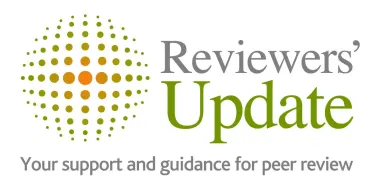
Perspectives on peer review: insights from industry experts

Recap and recent enhancements to Find Reviewers

Peer review: how exactly do I do that?

Ten reasons to accept your (next) invitation to review

Two heads are better than one: working with a co-reviewer

How to tackle your first review

Recognition innovation: enabling peer review activity integration with ORCID

Want to become a certified peer reviewer?

Introducing Reviewer Hub

Our reviewer volunteer journey
Societies' update.

Societies and their journals walking the talk on the road to equity

3 ways professional societies can boost impact through collaboration

Data-driven journal feedback is a gift

Lights, cameras, action — and more! Tips for improving your author and editor videos

How IBRO revamped its journals to better serve the global neuroscience community

Creative ways to celebrate journal and society anniversaries

Three steps to implementing DEI across your professional society
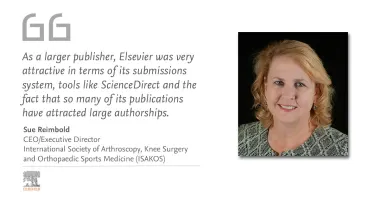
Flipping to open access: How a future-focused society switched publishers and business models
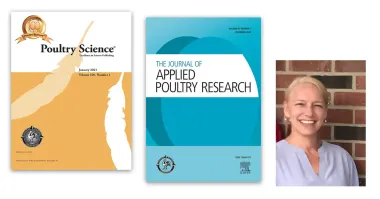
Why open access can offer different possibilities for societies
Societies’ update, elsevier connect communities and topics.

Sustainability

Open science

Gender & Diversity

Healthcare & Medicine

Library Connect

Research leadership

Researchers

Data & Analytics

Learn how Elsevier is supporting open science


COMMENTS
This is why the literature review as a research method is more relevant than ever. Traditional literature reviews often lack thoroughness and rigor and are conducted ad hoc, rather than following a specific methodology. ... Literature reviews play an important role as a foundation for all types of research. They can serve as a basis for ...
"A substantive, thorough, sophisticated literature review is a precondition for doing substantive, thorough, sophisticated research". Boote and Baile 2005 . Authors of manuscripts treat writing a literature review as a routine work or a mere formality. But a seasoned one knows the purpose and importance of a well-written literature review.
Examples of literature reviews. Step 1 - Search for relevant literature. Step 2 - Evaluate and select sources. Step 3 - Identify themes, debates, and gaps. Step 4 - Outline your literature review's structure. Step 5 - Write your literature review.
A literature review is not only a summary of key sources, but has an organizational pattern which combines both summary and synthesis, often within specific conceptual categories.A summary is a recap of the important information of the source, but a synthesis is a re-organization, or a reshuffling, of that information in a way that informs how you are planning to investigate a research problem.
A sophisticated literature review (LR) can result in a robust dissertation/thesis by scrutinizing the main problem examined by the academic study; anticipating research hypotheses, methods and results; and maintaining the interest of the audience in how the dissertation/thesis will provide solutions for the current gaps in a particular field.
What kinds of literature reviews are written? Narrative Review: The purpose of this type of review is to describe the current state of the research on a specific topic/research and to offer a critical analysis of the literature reviewed. Studies are grouped by research/theoretical categories, and themes and trends, strengths and weakness, and gaps are identified.
Example: Predictors and Outcomes of U.S. Quality Maternity Leave: A Review and Conceptual Framework: 10.1177/08948453211037398 ; Systematic review: "The authors of a systematic review use a specific procedure to search the research literature, select the studies to include in their review, and critically evaluate the studies they find." (p. 139).
Purpose and Importance of the Literature Review. An understanding of the current literature is critical for all phases of a research study. Lingard 9 recently invoked the "journal-as-conversation" metaphor as a way of understanding how one's research fits into the larger medical education conversation. As she described it: "Imagine yourself joining a conversation at a social event.
A literature review is meant to analyze the scholarly literature, make connections across writings and identify strengths, weaknesses, trends, and missing conversations. A literature review should address different aspects of a topic as it relates to your research question. A literature review goes beyond a description or summary of the ...
Mapping the gap. The purpose of the literature review section of a manuscript is not to report what is known about your topic. The purpose is to identify what remains unknown—what academic writing scholar Janet Giltrow has called the 'knowledge deficit'—thus establishing the need for your research study [].In an earlier Writer's Craft instalment, the Problem-Gap-Hook heuristic was ...
A literature or narrative review is a comprehensive review and analysis of the published literature on a specific topic or research question. The literature that is reviewed contains: books, articles, academic articles, conference proceedings, association papers, and dissertations. It contains the most pertinent studies and points to important ...
Writing a literature review requires a range of skills to gather, sort, evaluate and summarise peer-reviewed published data into a relevant and informative unbiased narrative. Digital access to research papers, academic texts, review articles, reference databases and public data sets are all sources of information that are available to enrich ...
The systematic literature review (SLR) is one of the important review methodologies which is increasingly becoming popular to synthesize literature in any discipline in general and management in particular. ... Snyder H. (2019). Literature review as a research methodology: An overview and guidelines. Journal of Business Research, 104, 333-339 ...
The objective of a Literature Review is to find previous published scholarly works relevant to an specific topic. A literature review is important because it: Explains the background of research on a topic. Demonstrates why a topic is significant to a subject area. Discovers relationships between research studies/ideas.
A literature review is important because it: Explains the background of research on a topic. ... Your literature review should be guided by your central research question. The literature represents background and research developments related to a specific research question, interpreted and analyzed by you in a synthesized way. ...
Besides the obvious reason for students -- because it is assigned! -- a literature review helps you explore the research that has come before you, to see how your research question has (or has not) already been addressed. You identify: core research in the field. experts in the subject area. methodology you may want to use (or avoid)
Some Issues in Liter ature R eview. 1. A continuous and time consuming process runs. through out r esearch work (more whil e selecting. a resear ch problem and writing 'r eview of. liter ature ...
Most literature reviews are embedded in articles, books, and dissertations. In most research articles, there are set as a specific section, usually titled, "literature review", so they are hard to miss.But, sometimes, they are part of the narrative of the introduction of a book or article. This section is easily recognized since the author is engaging with other academics and experts by ...
Literature reviews establish the foundation of academic inquires. However, in the planning field, we lack rigorous systematic reviews. In this article, through a systematic search on the methodology of literature review, we categorize a typology of literature reviews, discuss steps in conducting a systematic literature review, and provide suggestions on how to enhance rigor in literature ...
What is a literature review? Definition: A literature review is a systematic examination and synthesis of existing scholarly research on a specific topic or subject. Purpose: It serves to provide a comprehensive overview of the current state of knowledge within a particular field. Analysis: Involves critically evaluating and summarizing key findings, methodologies, and debates found in ...
Implementing evidence into practice requires nurses to identify, critically appraise and synthesise research. This may require a comprehensive literature review: this article aims to outline the approaches and stages required and provides a working example of a published review. Literature reviews aim to answer focused questions to: inform professionals and patients of the best available ...
A literature review is a compilation of the works published in a particular field of study or line of research, usually over a specific period of time, in the form of an in-depth, critical bibliographic essay or annotated list in which attention is drawn to the most significant works.. Summarizes and analyzes previous research relevant to a topic ...
3. Literature Review Definition A literature review may be defined as a survey of the most pertinent literature related to a particular topic or discipline. (Hart, 1998, p. 13) argued that the literature review is the selection of available materials on the topic, containing information ideas, data and evidence reported
There are many different types of literature reviews from traditional literature reviews to rigorous systematic reviews. Each has its own methodology. Please review resources on this page and familiarize yourself with the task, commitment, and purpose of each before trying to decide on the type of review best fitting your research question.
As for all studies, the research question should be relevant (of importance, with uncertainty or variation in practice), and clearly defined. The review must have a detailed study protocol, with detailed definitions of the exposures and outcomes under study, inclusion and exclusion criteria for studies, the search strategy, the information ...
A recent systematic review by our research team indicated that DCE is a suitable method for studies related to neurodevelopmental follow-up care . However, limitations were noted in the methodology of the studies included in the review, such as not providing reasons for forced choices, not conducting pilot tests, and using numerous attributes ...
Selecting the right quality of literature is the key to successful research literature review. The quality can be estimated by what is known as "The Evidence Pyramid.". The level of evidence of references obtained from the aforementioned search tools are depicted in Figure 9. Systematic reviews obtained from Cochrane library constitute ...
News, information and features for the research, health and technology communities
To evaluate, through a systematic literature review, whether periodontal status in HIV-infected individuals is different from those non-HIV-infected. Materials and Methods. A systematic search for published observational studies within six electronic databases and grey literature was conducted, PROSPERO database number CRD42020160062.
The purpose of the review is to summarize clinical and preclinical study data from the literature related to the relationship between autism and inflammation, as well as hypotheses associated with this relationship. Autism is a neurodevelopmental disorder with an increasing prevalence, yet limited data regarding its etiology. Inflammatory changes are thought to potentially play a role in the ...